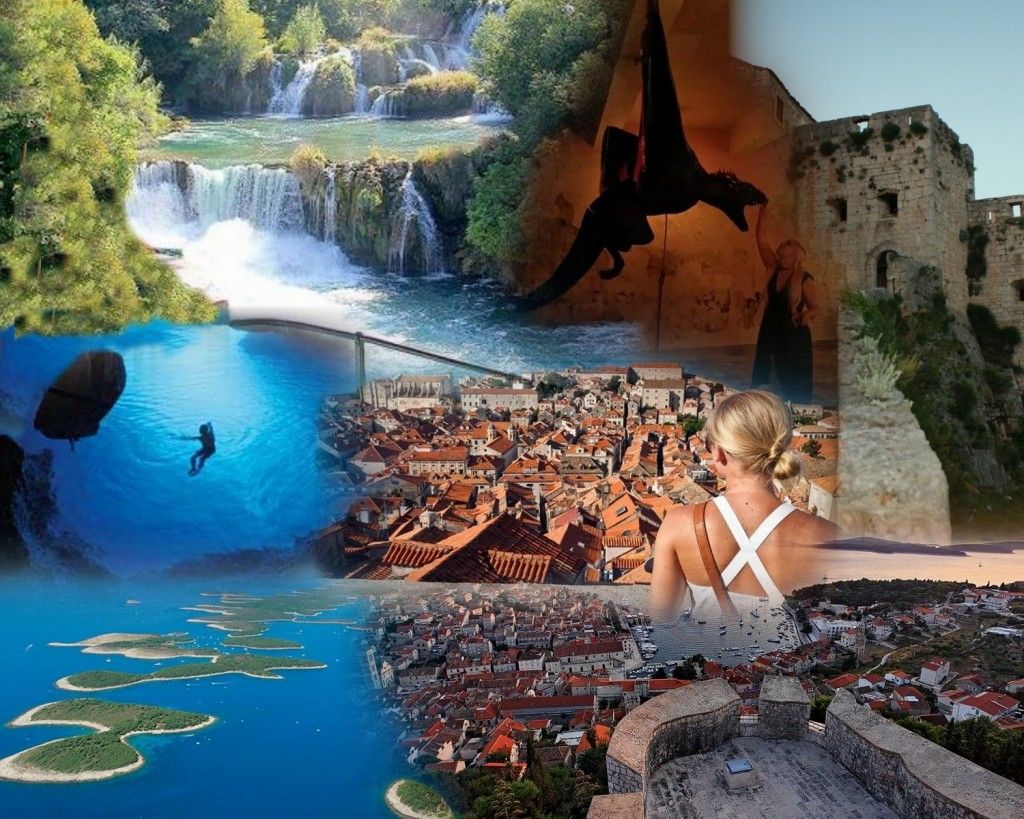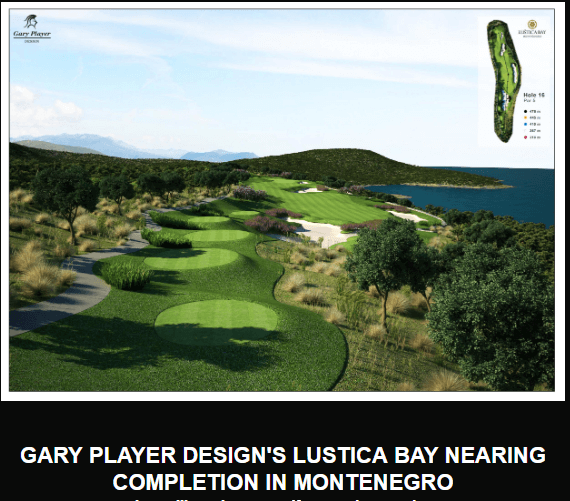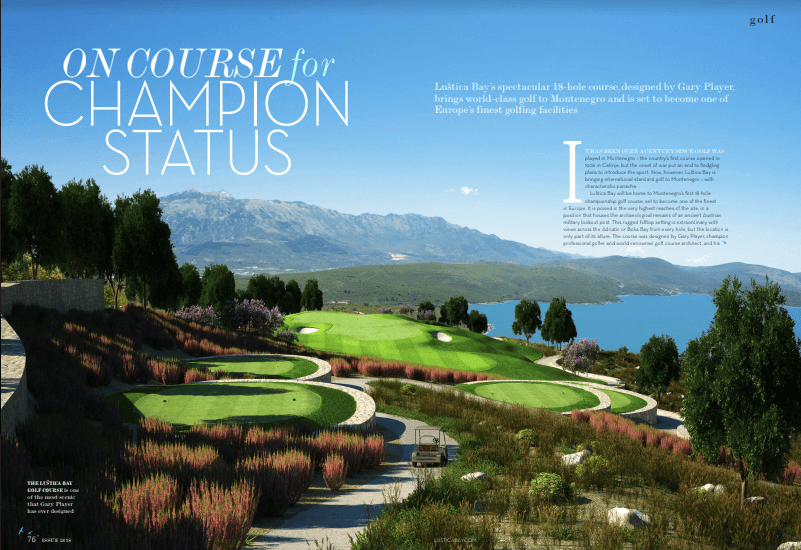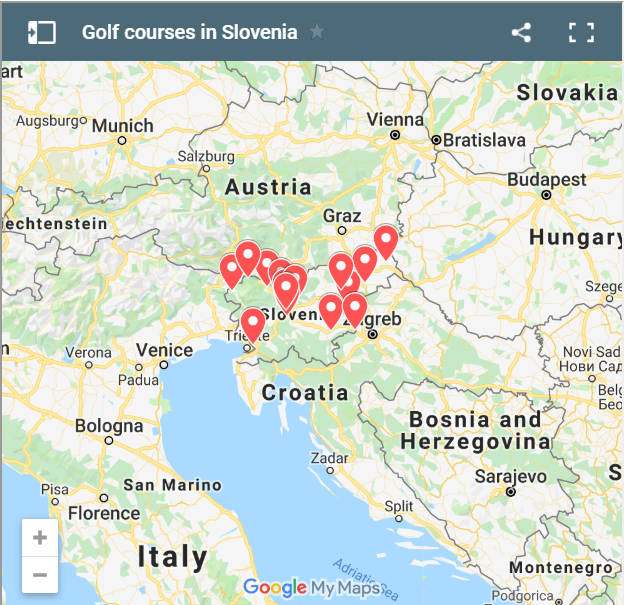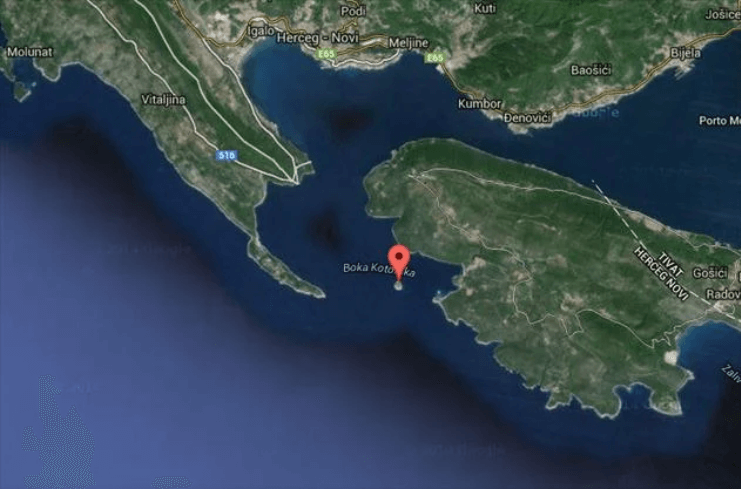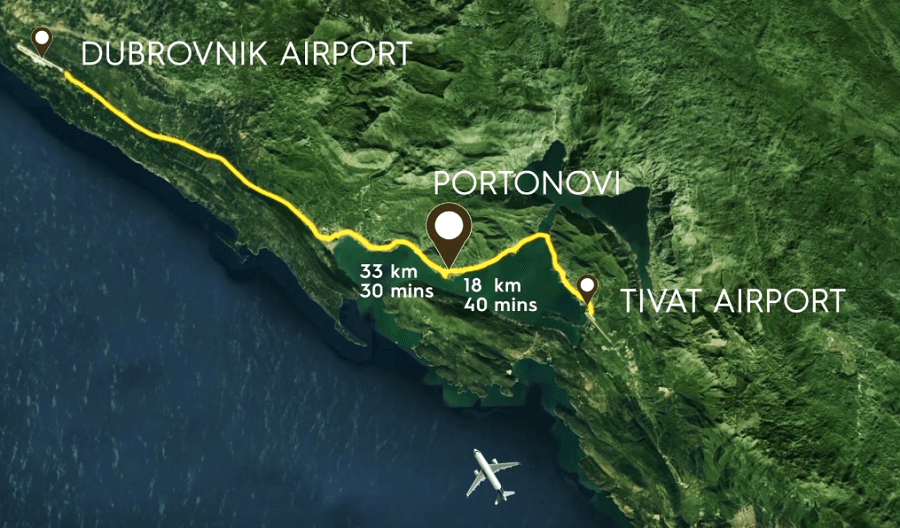Cristiano Ronaldo and Fiancée in Dubrovnik for Easter!
After a very important week, where his team Juventus lost in Torino to Ajax and has been kicked out of the Champions League, but managed to secure yet another Italian champions title (first for him!), Cristiano Ronaldo has decided to take a brief vacation. And in order to have a couple of relaxing days away from the football pitch, the Juventus striker decided to come to - Dubrovnik!
Dubrovački vjesnik reports that Cristiano and his fiancée Georgina Rodriguez came to Dubrovnik late last night, several hours after the win against Fiorentina which secured the Scudeto for the team, on a private jet. Not much is known about their plans, but it's obvious they decided to spend Easter in Croatia. They are not expected to stay in Croatia for long, as Cristiano has another game coming in a couple of days: Juventus is playing Inter in Milano on April 27th.
There isn't much doubt that his teammate Mario Mandžukić helped convince Cristiano to visit his home country, but one question remains: why wasn't Luka Modrić able to do the same in all those years the two shared a locker room in Madrid?
We'll keep an eye on Cristiano's Instagram feed, where he will no doubt be sharing some of the photos of his Dubrovnik vacation!
Unforgettable Croatia Agency Offers Trip to Croatia for GoT Game Winner
Think you can predict the ending of GoT? Let the Unforgettable Croatia agency know!
If one thing has put Croatia on the map more than anything else for film and TV buffs, its the hit Game of Thrones series which has taken the world by storm, leading to countless visits to the many Croatian filming sites, particularly those in Dalmatia's southernmost city of Dubrovnik, which plays Kings Landing in the series, as well as Split.
While the Game of Thrones hysteria has been met with both positive and negative conclusions from residents of popular cities like Dubrovnik and Split, there is no doubt that economically speaking, Croatia has benefited beyond belief.
As Lider writes on the 19th of April, 2019, the British-American agency Unforgettable Croatia has announced a competition in which the task is to guess the ending of the wildly popular Game of Thrones (GoT) series and the reward for the one who manages to decifer the unfolding of the series' events will be rewarded with a trip to no less than GoT heaven - Croatia. So far, more than 5,000 people have sent Unforgettable Croatia their thoughts about who will take the throne at the end of the hit series.
The winner will be awarded a tourist-style tour of the various locations where the popular series was filmed across Croatia, more specifically Dalmatia, including Split, Klis, Hvar, Vis and Dubrovnik. Game of Thrones took off like few could have ever imagined, and the promotion that brought to Croatia was and remains unquantifiable. The first episode of the final season alone, which broadcast on Sunday attracted a record 11.8 million viewers.
Graham Carter, the owner of the British-American Unforgettable Croatia agency which launched the this GoT inspired competition, had his business in mind, which would further flourish by increasing the overall interest in travelling to Croatia. Every year, this agency brings about 5,000 passengers travel to Croatia, and they're hoping to increase that figure to 6,500 next year, as Carter revealed for Večernji list. Carter is currently residing in Split, where he is trying to establish a Croatian office for his the Unforgettable Croatia agency.
The winner of Unforgettable Croatia's competition will be offered half-board accommodation for a seven-day trip for two to Croatia, a tour of the Game of Thrones sites accompanied by a professional guide, and a visit to Hvar and Vis by sea. But there is, of course, a catch - the winner will not win the airplane tickets for travel, and they'll need to foot the bill for that themselves.
GoT fan? Have your say! Click here.
Make sure to follow our dedicated lifestyle page for much more.
Mosque with Minaret to be Constructed for Dubrovnik's Muslim Community
A brand new building is set to be built down in Dubrovnik as a mosque for the religious needs of almost 1,500 people who identify as Muslims (according to the 2011 census) will be constructed.
As Al Jazeera Balkans writes on the 16th of April, 2019, the Islamic centre which will be located in the Gruž area of the City of Dubrovnik should become a reality in just two years, according to a report from Dubrovacki dnevnik.
As soon as all of the required documentation is dealt with and settled, the construction of the mosque, complete with a minaret, is likely to begin, which is not expected to last for a particularly long time. For now, building permits are being waited on.
The future mosque's location will be at a space on the site of former GP Dubrovnik in Gruž, the project foresees the construction of a mosque complete with a minaret, which will be built in Mediterranean or Moroccan style.
"The project will go its way, it will not take long until we get the construction permit, so we're currently preparing the paperwork, and everything will be ready for construction in two years. We have to emphasise the fact that we in the Islamic community have great cooperation with the city authorities which have been coming to meet with us,'' said the Islamic Community's president, Fehim Vukotić.
The construction of an Islamic center is a long-term desire of Dubrovnik's resident Muslim population, of whom in Dubrovnik, at least according to the census of 2011, there are 1,499. That number has likely risen since then.
By building an Islamic center and a mosque with a minaret, there will finally be a place dedicated to numerous social content and events for the southern Dalmatian city's local Muslim community, as well as prayer rooms.
Make sure to follow our dedicated lifestyle page for much more. If it's just Dubrovnik and the extreme south of Dalmatia you're interested in, give Total Dubrovnik a follow. Need ideas for what to do when visiting the Pearl of the Adriatic, check out Dubrovnik in a Page.
Busy Summer Ahead: 81 New Lines to Croatian Airports this Season
In the upcoming summer flight schedule, which is from March 31 to October 27, 81 new routes will operate to Croatian airports, including regular, low-cost and charter lines, from 24 world markets, reports Dalmatinski Portal on April 15, 2019.
Additionally, the first week of the summer flight began with a record 252 flights, which displayed a 30 percent increase compared to the first week of the summer flight schedule last year. Most of the flights in the first week were recorded at the airports in Zagreb, Split, and Dubrovnik.
“New airlines and increasing the number of rotations are, among other things, the result of the activities of the Croatian Tourist Board. We collaborate with airline companies through strategic promotional campaigns in important markets, aiming to position Croatia as an attractive and well-connected year-round destination. We are particularly pleased with the new intercontinental line between Philadelphia and Dubrovnik, which joins Croatia and the United States market for the first time in 30 years,” said Croatian Tourist Board director Kristjan Staničić, adding that this year he has strategic marketing partnerships with tour operators and over 40 million kuna was provided to airlines.
Looking at the markets, most of the new lines, or 14 of them, are from German cities, followed by 12 new lines from the UK market, 8 lines from France, 5 lines from Italy, and 4 lines from the Netherlands. Analyzing the summer flight schedule by the number of rotations, most rotations are planned between Croatia and Germany, the UK, France, Austria, and Switzerland. Most new lines will fly to airports in Zadar, Split, Dubrovnik, Pula, and Rijeka. Most Croatian airports this year also recorded an increase in the number of rotations when looking at the previous season, and according to the absolute number of new rotations, the Zadar airport has a 25 percent increase, while Pula follows with a 7 percent increase and Dubrovnik with 4 percent.
When looking at airlines, most new routes were launched by Ryanair, namely 15 of them, followed by eight new lines from Volotea, six new lines from TUI and five new easyJet lines.
To read more about travel in Croatia, follow TCN’s dedicated page.
Things to Do in Croatia: Top 5 Game of Thrones Tours
April 13, 2019 - 'Summer is coming' has never been a more appropriate choice of words. Continuing our series Things to Do in Croatia, we turn to a massively popular niche: Game of Thrones
Knowing a good part of the show was filmed at several locations on the Croatian coast, thousands of visitors have been flocking to Dalmatia in recent years, eager to explore King's Landing or the City of Meereen in real life. While you won't have any trouble finding an agency offering GoT-themed tours these days, we bring you a selection of four leading teams whose experienced guides will take you on an unforgettable journey through Westeros, along with one suggestion on how to make the trip on your own.
One last warning before we start: keep in mind that all featured tours involve a good deal of walking and stair climbing in the summer heat, so don't forget to bring along a bottle of water and wear sunscreen. Better safe than sorry!
1. Game of Thrones Dubrovnik Tour
Have a couple of stats to see why this particular crew has the honour of topping our GoT list: they rank no.1 among all Croatian GoT tours on TripAdvisor, and have seen more than 10.000 satisfied guests in the five years they've been doing the tour. The expert guides have all participated in the filming in some way, either as extras or as production staff, so they have many an inside story to share. They seem like a spirited bunch with a good sense of humour - see for yourself.
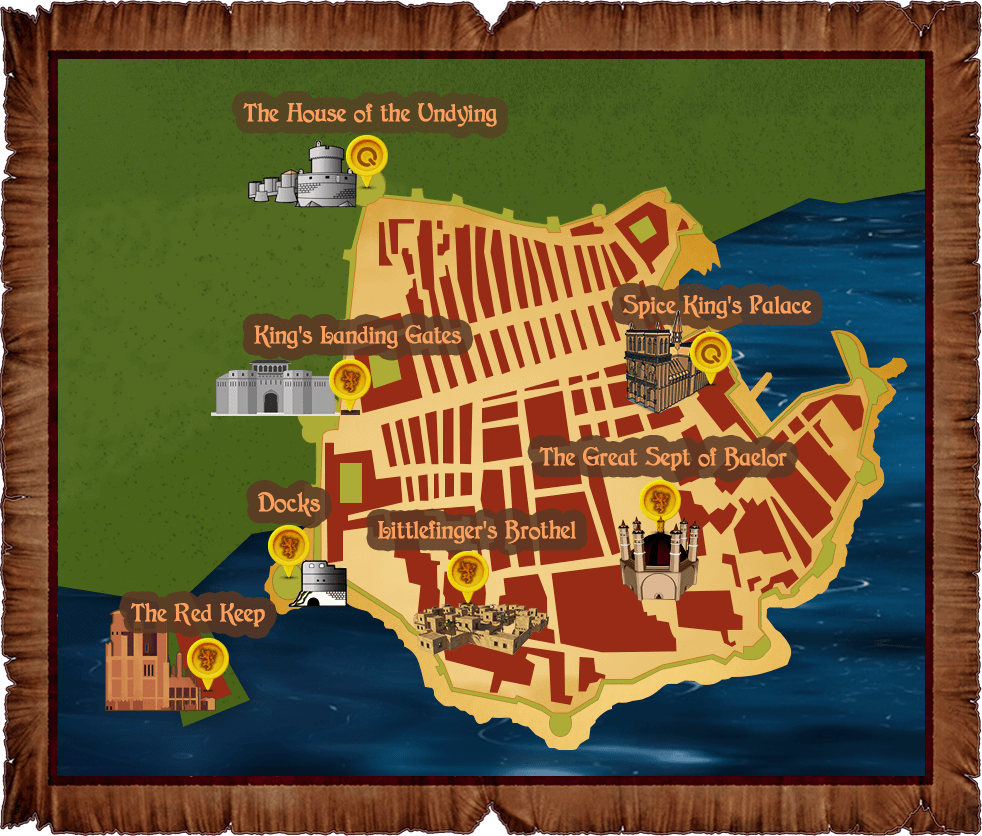
Here's the itinerary, starting from the meeting point in front of Pile Gate in Dubrovnik:
Red Keep
Climb the stairs of Fort Lovrjenac for magnificent views of the Old City and experience multiple scenes filmed there – Joffrey’s Nameday Tournament, Tyrion slapping Joffrey, Sansa saved by the Hound, 'Power is Power' dialogue, the Purple Wedding.
Docks of King’s Landing
Just seconds away from Pile Gate, in a hidden corner of the City, find the beach where Myrcella embarked on a journey to Dorne and where Sir Robert Baratheon's bastard kid was killed, and visit the spot where Sansa wondered whether to elope with Littlefinger.
Gates of King’s Landing
Enter the City through the same gates Jaime did when he came back home, and stroll down the street where the rebellion against Joffrey took place.
Littlefinger’s Brothel
Passing through the narrow streets of the Old City, arrive to the Brothel and see what Oberyn, Tyrion and High Septon were doing there. Enjoy the views of the House of Undying as we keep ourselves at the safe distance…
Sept Baelor
There is only one word that can be said here, and the word is: “SHAME”!
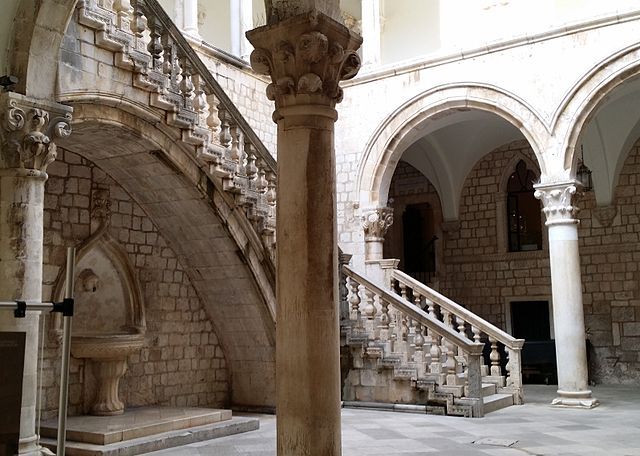
Spice King of Qarth Palace
Time to leave Westeros and cross the Narrow Sea: just a few steps to enter Rector’s Palace and we are in Qarth alongside Daenerys pleading for a fleet of ships.
Walk of Shame
Follow the footsteps of Cersei as the Walk continues and see her enter another Red Keep in the City, far away from the first one…
Views of Qarth
Arrive to the terrace in front of the powerful Revelin Fortress and enjoy the views of Lokrum Island, Duel Arena, and learn more about Qarth, Oberyn, the Mountain, and the Dothraki desert…
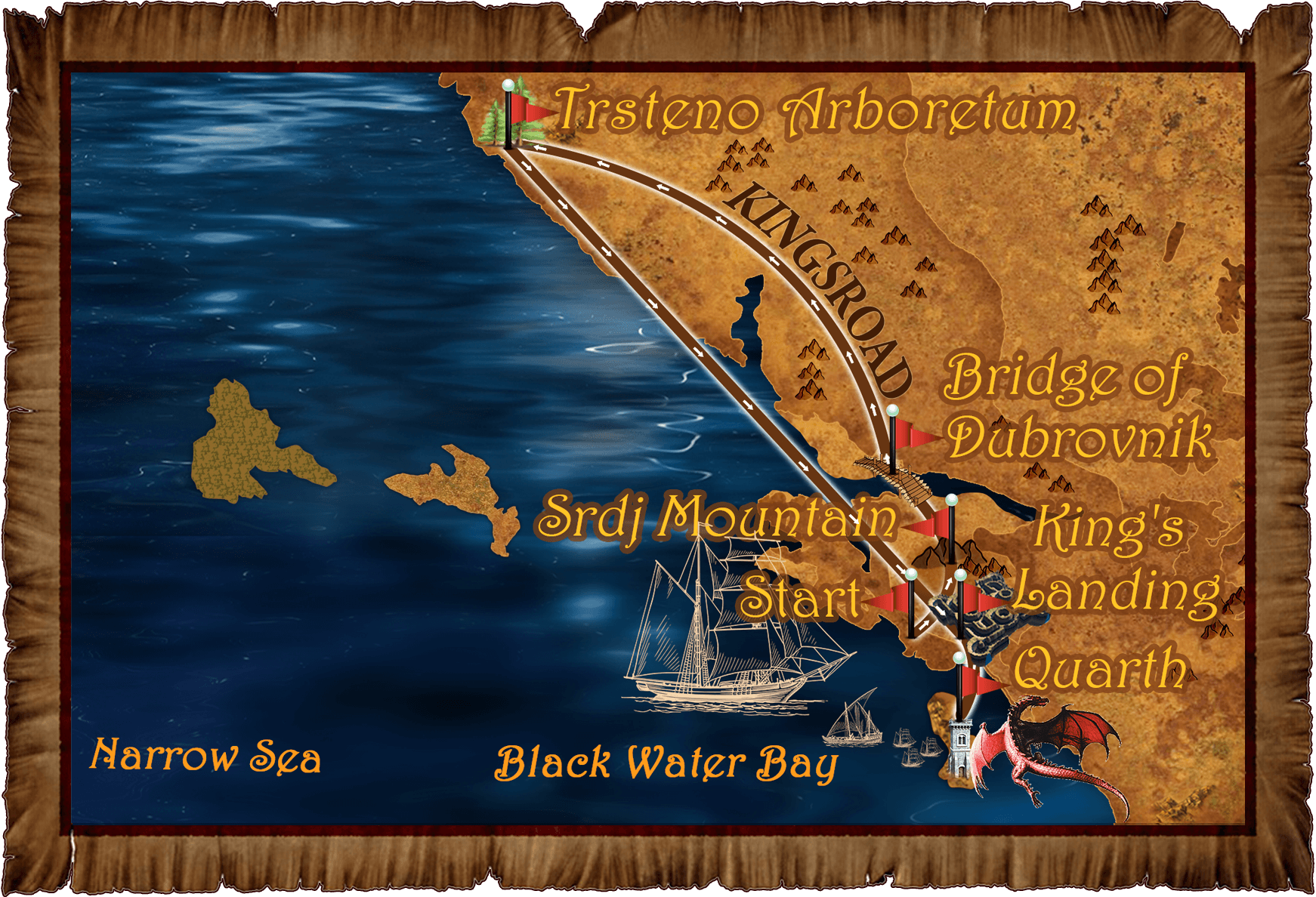
Those who are eager to spend some more time in the GoT realm have a cool option at their disposal: The Ultimate Tour for the Ultimate Fans, a combination of the walking tour described above and a visit to several filming locations outside the city of Dubrovnik. This one is a bit more challenging - prepare for a 3km walk and some 300 steps along the way.
After you're done with Dubrovnik, you'll be picked up by a minivan and head on to...
King’s Road and King’s Landing panorama
Photo stop at the slopes of Srđ mountain where Tyrion was waiting for Oberyn and where Jaime says goodbye to Brienne.
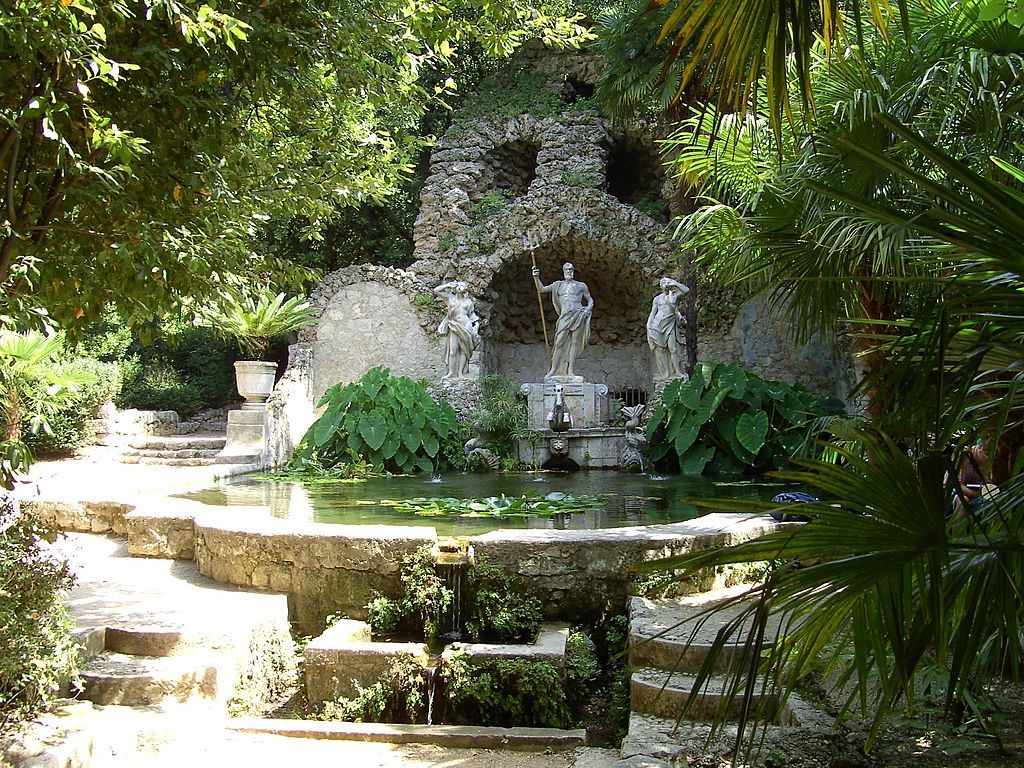
Gardens of King’s Landing
Visit Trsteno Arboretum where Oberyn was writing letters to his daughters, walk the same path as Cersei and Oberyn did, sit at the fountain where Sir Loras and Sansa discussed their upcoming marriage and where Brienne told Margaery about the Shadow killing Renly. Take a necklace from Sir Dantos in the hidden corner of the gardens and enjoy beautiful views from the pavilion where Olenna had her meetings.
More details on both tours are available here, along with location photos.
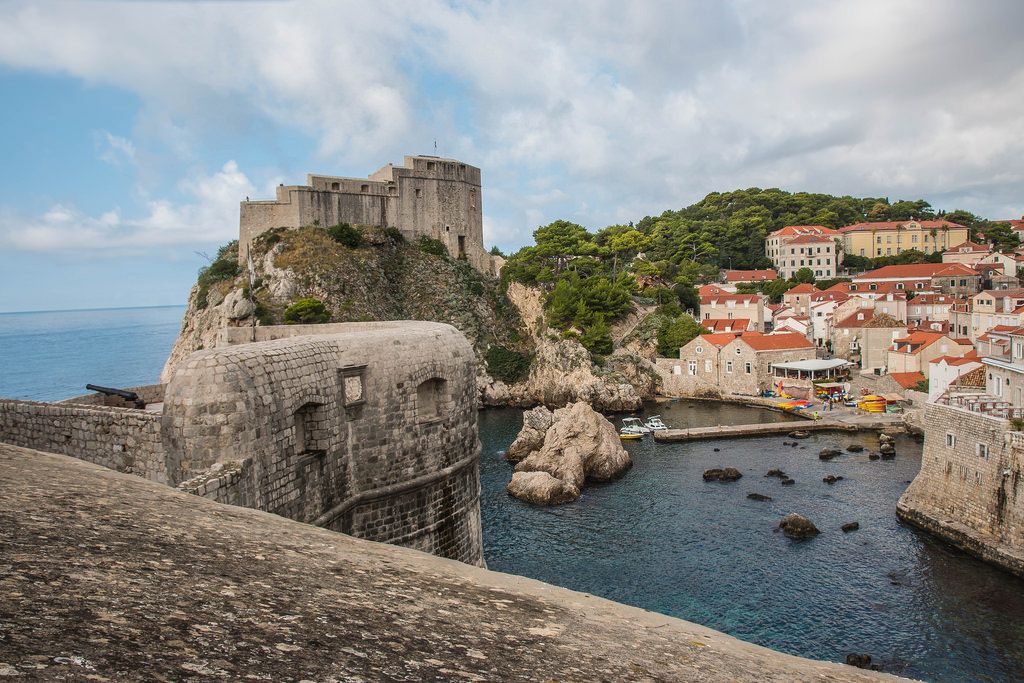
2. Dubrovnik: DU the Tour!
Dubrovnik Private Tours, also known under the encouraging motto DU the tour!, has three charming ladies at the helm: Ivana, Marina, and Ana. All three have years of experience with guided tours, both group and private, and their Game of Thrones Walking Tour will enable you to see the most distinguished GoT locations in Dubrovnik in under two hours.
This is your perfect opportunity to visit locations in Dubrovnik that you’d certainly miss out on if you were strolling around by yourself. You will unveil a different face of Dubrovnik by visiting the most memorable scenes from HBO's greatest TV show ever! Let us take you down the Walk of Shame, see where Joffrey died and find out what was going on behind the scenes.
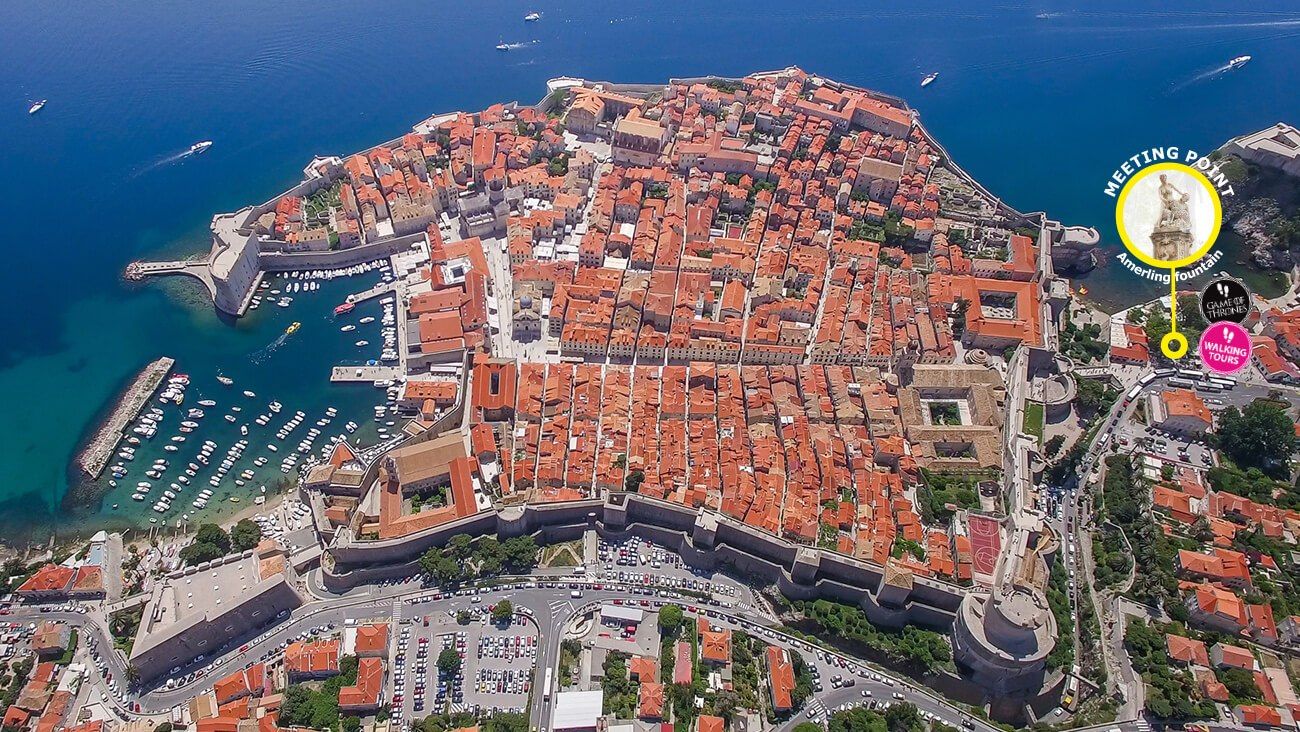
Explore what Game of Thrones looks like in real life and also learn about similarities between Dubrovnik’s real history and the TV series. All of our tours are accompanied by an expert tour guide who has a booklet with screenshots from the series, with the purpose of reminding you exactly what happened and where.
You'll discover why HBO chose Dubrovnik for the capital of Seven Kingdoms and learn about the filming process - find out how crowds were handled, how the company selected the extras, and other juicy stories from the set. Locations you'll visit include the Red Keep (Lovrjenac Fort), the City of Qarth (Lokrum) and the sites which hosted the Purple Wedding (Gradac Park), the Riot in the Streets (Pile Gate), and the Walk of Shame (the Jesuit staircase in the Old Town).
The tour takes place three times a day, at 12:30, 16:00 and 18:00. There's no need to book your spot in advance - you just have to show up at the meeting point 5 minutes before departure. Learn more about the tour and the prices here.
3. Game of Thrones Split Tour
We're heading a bit north to Split, another major GoT hotspot on the Adriatic coast. The ancient basement of Diocletian's Palace hosted Daenerys's throne room and the dungeon where she kept her dragons locked up for a while. The streets of Split have also hosted the Slave Rebellion, along with a couple of other memorable scenes you've seen in the series. You'll also visit Klis Fortress, a majestic historical site which played the City of Meereen, and end the tour with a visit to the water mill which hosted Missandei's bathing scene.
At the Game of Thrones Tour in Split, you are guaranteed a truly authentic experience. They have a great staff of tour guides, all completely obsessed with both the television series and the books - you may even get stumped by a few of their questions during the tour, when they test your knowledge on all things GoT.
This is the tour for casual watchers, hardcore GoT nerds and everyone in between. Since you’ll visit several notable Croatian landmarks, your knowledgeable guides will also give you background on the local history of Split, providing you with two tours rolled into one.
As their reputation precedes them, they're sure to have a full plate in the coming months, so you're advised to book your desired date at least two weeks in advance. Click here to see more details about the tour, and check out why their satisfied guests made them the highest ranked GoT tour in Split on TripAdvisor.
4. Game of Thrones 5 Days Experience
If you know in advance a simple half-day walking tour won't satisfy your GoT cravings, you can go all out with a 5-day round trip of all major GoT filming locations on the Croatian coast, prepared by Vetus Itinera Travel Agency. The tour doubles as a remarkable opportunity to see plenty of renowned tourist destinations on the Adriatic in less than a week - here's a rundown of the itinerary:
Day One: Welcome to King’s Landing
Welcome to the legendary City of Dubrovnik. A republic of its own and a beacon of diplomacy for most of its history, Dubrovnik’s independent spirit nowadays remains as strong as ever. You already know this city, for this is King’s Landing, host to the revelries of Robert Baratheon, the excess lifestyle of Prince Joffrey, and the cunning wit of Tyrion Lannister. Walk onto the Red Keep, here known as Lovrjenac Fortress. Follow the trails of Arya Stark and see where Daenerys, the Queen of Dragons, gave freedom to her fire-breathing flying creatures.
Day Two: The Path to Meereen
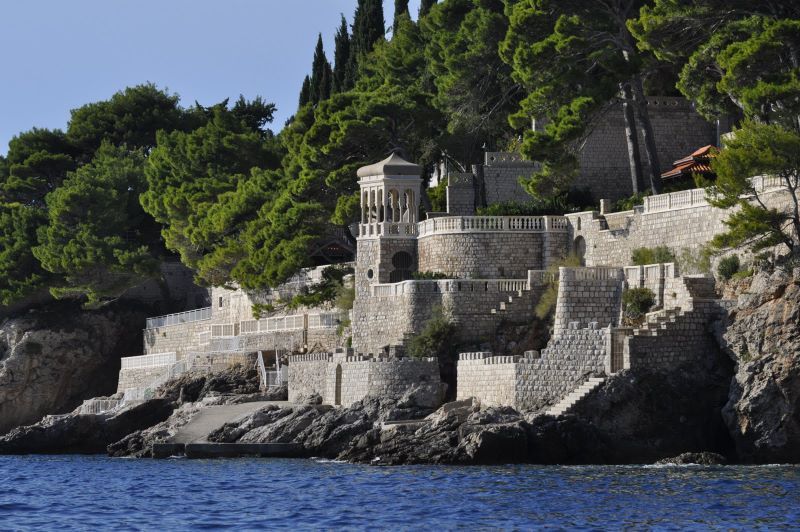
Following Daenerys on her path to Meereen, where she seeks revenge upon the vicious slave-owners for crucifying hundreds of slave-children, you will walk through Arboretum Trsteno - the palace gardens of King’s Landing, where gossip and intrigue foreshadowed battles. This luscious combination of greenery and superb architecture of yesteryear tells tales of royalty in the oldest arboretum in this part of Europe.
On to the Walls of Ston, a 3.5 miles-long defensive construction dating back to the 14th century that was also part of King’s Landing. Ston is a Dalmatian town you will fall in love with, and as playwright George Bernard Show once said, ‘there is no love sincerer than the love of food’ - an appropriate quote, as Ston is known as the home of one of the rarest, most delicious oyster species.

Day Three: Daenerys Finds Comfort on the Islands and the Sea
On her conquest of Slaver’s Bay, as shocked and angered as Daenerys was upon witnessing the evil doing of the Meereen slave owners, she couldn’t help but pause and take comfort in the magnificent seaside view that was laid in front of her. Meet the sunniest place in Europe, the lovely island of Hvar, a favorite destination to those who know how to travel well, and a perfect backdrop to the Game of Thrones. A peaceful retreat, or perhaps Slaver’s Bay? The island’s capital is an ancient town of the same name, rich with history and a thriving art scene.
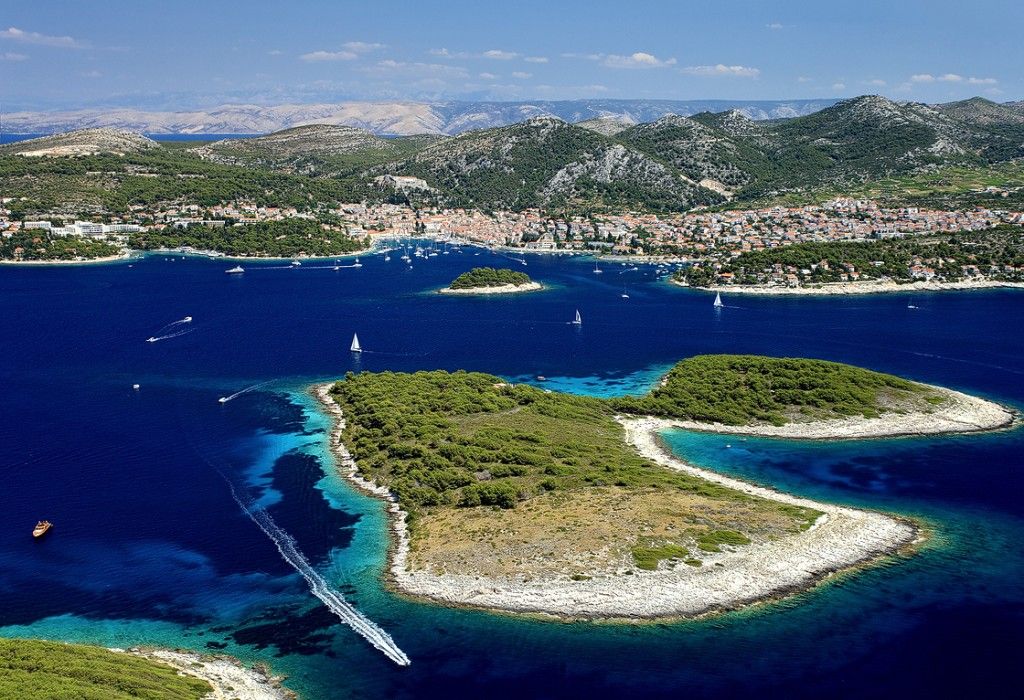
Hell’s Islands, or ‘Paklenjaci’ is a group of small picturesque islands just outside of Hvar, and a destination easily reachable by speed boat. Many have found peace and seclusion on Hell’s Islands, as they are home to charming taverns and small family hotels. Time moves slowly here.
Moving on with your nautical journey, you will arrive on the island of Vis – raw, isolated from the mainland, charismatic and beautiful. Your tour of Vis wouldn’t be complete without visiting a tiny nearby island called Biševo. With an official population of fifteen souls, the limestone Island of Biševo is home to the Blue Cave, one of the most magical places in the Mediterranean. Located in the Balun Bay, the Blue Cave was initially described and painted by Baron Eugen von Ransonet, and used to be accessible only by diving until the 18th century. Illuminated by both the sun and the moon, the inside of the cave glows with an incredible aquamarine light.
Day Four: The New Throne
Another treat! We welcome you to the New Throne, so to speak - the City of Šibenik, whose fortified walls and ancient architecture were seen in the fifth season of the Game of Thrones. Šibenik is known as The King’s City, for it was the court of Croatian King Krešimir IV in the 11th century; a perpetual stronghold for many following rulers, Šibenik is protected by four fortresses on each of its side: the Fortress of St. Nicholas, St. Michael, St. John and the Šubićevac Fortress (Barone).
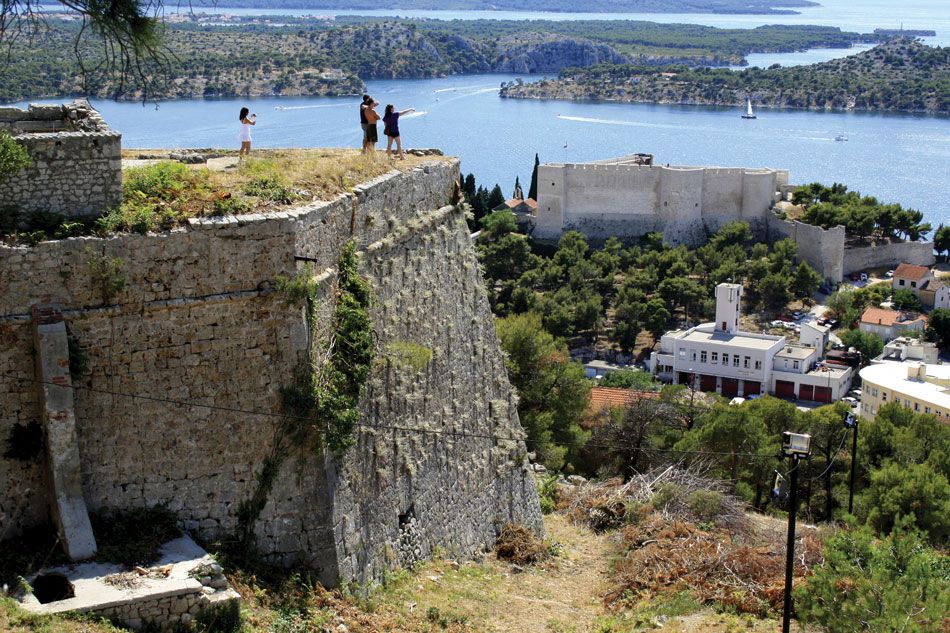
Move away from the city and return to nature, as we welcome you to Krka National Park, the backdrop to numerous scenes in the show’s fourth season. It is a breathtaking place, and its cascading waterfalls will leave you mesmerized and refreshed, as you swoon into the greens of its flora and the blues of its crystal clear water.
Now, you’re ready to visit agro tourism Kalpić, in the village Konjevrate, another natural backdrop to the fourth season of the show. These stone houses speak tales of Dalmatian ancestors, while the food and beverages you’ll enjoy make for true hedonistic perfection.
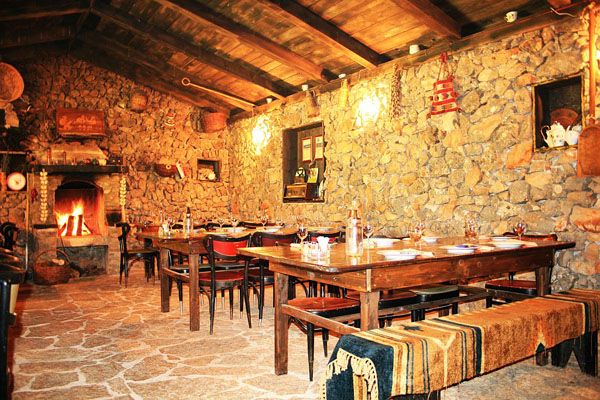
Day Five: Setting the Slaves Free - Meereen Belongs to the Queen of Dragons
Follow the path of Daenerys as she seeks to conquer Slaver’s Bay and free the slaves of Meereen. The 1700-year-old Mediterranean metropolis of Split transforms into Meereen, as you start the final chapter of your tour at Diocletian’s Palace, its ancient basements and narrow streets, where freed slaves sought revenge upon their masters. Travel to the suburbs, to the town of Žrnovnica, whose green mill was used for Missandei’s bathing scene, and then continue to the town’s quarry, where the Unsullied battled for Daenerys. Finally, walk the path to the top of Klis Fortress, as it transforms into the Meereen throne, where Daenerys set the slaves free and crucified their wicked owners. At the end of the tour, you will enjoy an authentic Game of Thrones dinner.
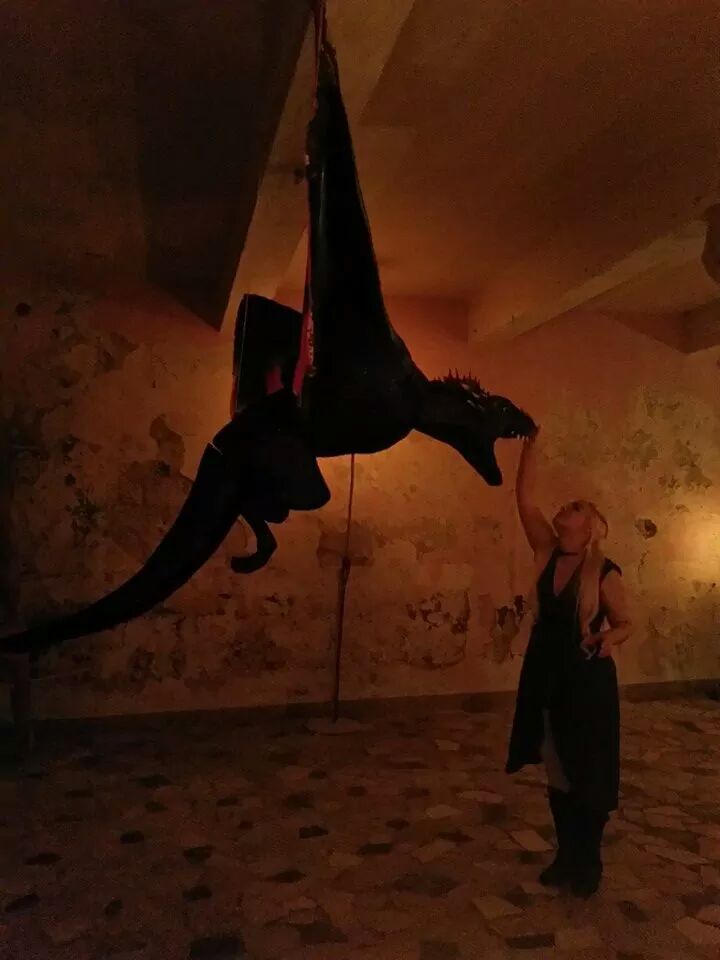
Learn more about the 5-day trip and other boutique tours offered by Vetus Itinera here.
5. Walk your own GoT path!
And finally, for the GoT-loving adventurers who aren't that fond of guided tours and prefer to explore new destinations on their own. Last year, Wanderu came out with a guide on how to create your own itinerary and see all major GoT filming locations in Croatia for less than $100 in total!
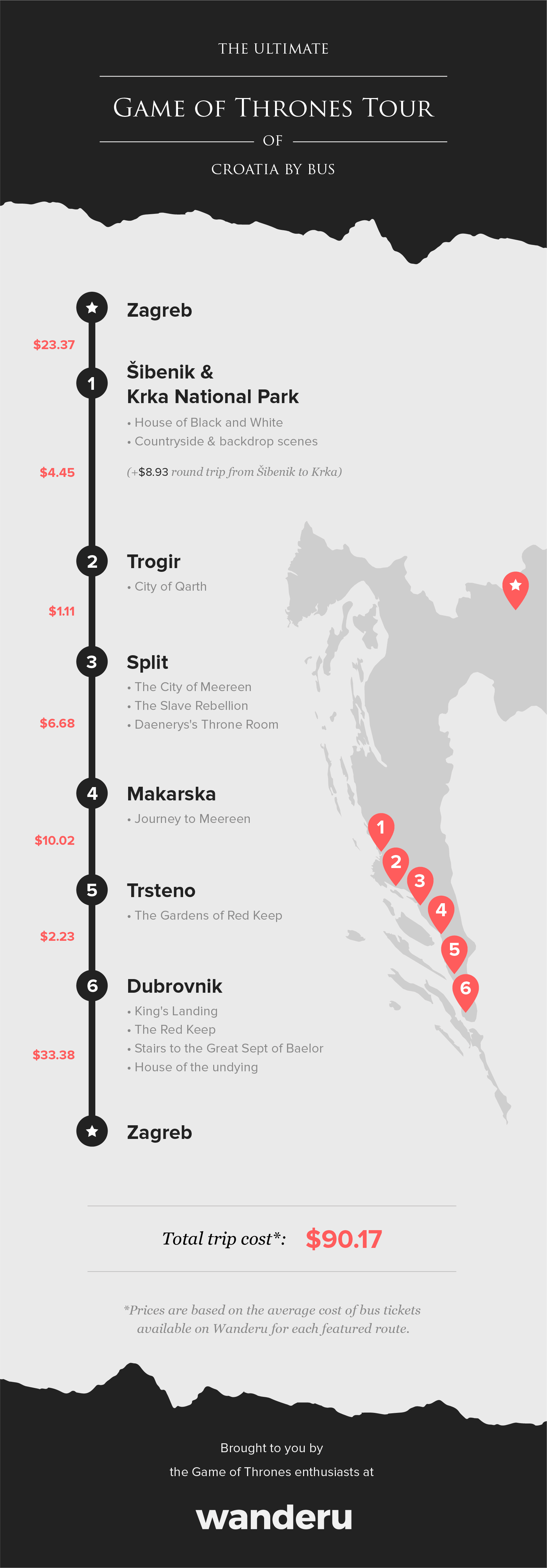
The Ultimate Game of Thrones Tour of Croatia by Bus will take you from Zagreb to Šibenik and Krka National Park, then on to Trogir, Split, Makarska, Trsteno, and Dubrovnik, before you head back to the Croatian capital. While some of the prices seem too good to be true - you're not likely to get from Trogir to Split for $1 on average, for example - the suggested itinerary will definitely come in handy when you start preparing for your Croatian GoT adventure. One small caveat to keep in mind: the listed sums relate to bus tickets only, so don't forget to add other expenses such as tickets to NP Krka and Lovrjenac Fortress in Dubrovnik.
Click here to explore the route suggested by Wanderu.
Get Ready for 'Game of Thrones' Final Season with 2CELLOS (VIDEO)
April 13, 2019 - Unless you live in a cave, you’re probably aware that the final season of Game of Thrones airs on Sunday, April 14. Even if you’ve never seen an episode of the wildly popular TV series, it’s safe to say that you’re somewhat familiar with the show’s drama - and that fans will enter a severe post-Game of Thrones depression once the final episode airs in just over a month.
For those of you gearing up for the end while recapping the first seven seasons, and for those of you who really could care less, we have something both diehard GoT fans and anyone with an ear for music will enjoy.
You might recall that back at the beginning of 2017, Croatia’s favorite cello duo released the first single off of their critically acclaimed album ‘Score,’ which was released in March of 2017. Namely, the album featured 14 theme songs from famous blockbusters which were recorded with the London Symphony Orchestra - often considered ”the best orchestra in the world".
There was no better way to announce the new album than with a taste of Game of Thrones, and Stjepan Hauser andLuka and Stjepan of 2CELLOS fame did just that, in the heart of Kings Landing - Dubrovnik.
“We filmed the video in the beautiful Dubrovnik where 'Game of Thrones' is filmed. We are happy that with our videos, we have the opportunity to show the world the beauty of our country, and this time the beauty of Dubrovnik where we particularly have ties because of Luka’s family,” said Stjepan Hauser back in 2017 of the music video directed by Darko Drinovec.
Today, in an effort to prepare GoT fans for what lies ahead, we’re bringing you back to January 13, 2017, when the 2CELLOS released their take on the ultra-famous Game of Thrones theme song.
You can watch the full video below.
Follow the latest on the 2CELLOS here.
To read more about lifestyle in Croatia, follow TCN’s dedicated page.
A Tale of 2 Golf Courses: Dubrovnik and Lustica Bay, Montenegro
April 12, 2019 - Continuing our look at the lack of foreign investments in Croatian tourism, taking a closer look at one of the government's flagship tourism strategies - golf. Oh dear.
This is not an article about golf.
This is not an article debating whether or not golf tourism is a good or bad thing, that is an entirely different discussion.
This is an article about incompetence.
This is an article about a sector of tourism which is central to Croatia's tourism strategy (according to its own documents) and yet where not only has nothing happened for a decade in terms of progress, but the Croatian tax-payer is facing a potential imminent bill of 500 million euro from an Israeli investor who has now given up on his golf dream in Dubrovnik.
Meanwhile in Montenegro...
Whenever I criticise something about Croatia (always in a constructive manner) and praise a neighbour, the haters flood my inbox with expletives and advice that I should leave Croatia. Apart from finding this pretty amusing, it highlights one of the main problems which is stopping Croatia from progressing, at least in my opinion. I call it the policy of deflection. Rather than accept that a foreigner might have a valid point and try and learn and improve, the standard response is abuse and attack - trying to deflect the issue. And so nothing changes.
I can understand why some people get angry when I compare the incompetence of our Kings of Accidental Tourism with other countries. Lessons from Macedonia on how to promote the wine industry, for example. Lessons from Rwanda, on how to use football to promote tourism. And Lessons from Montenegro, on how to become a luxury tourism destination, while turning Dubrovnik into an extension of luxury Montenegro's offer in the process. But that does not stop me wanting to try. As a foreigner living here for 17 years, running news portals in Croatia, Montenegro and Slovenia, I have perhaps a different perspective, and I genuinely want the best for Croatia, which is why we need to learn what we are doing badly, and what others are doing well. And then learn and improve.
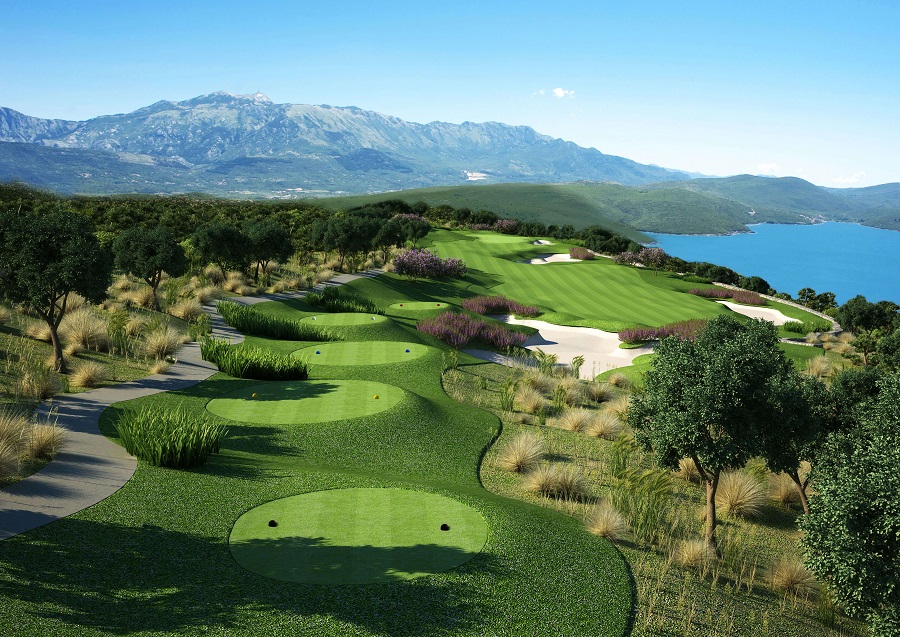
(All images and renderings courtesy of Lustica Bay golf development)
Today, we look at perhaps the finest example of incompetence in tourism strategy that I have come across in my time in Croatia. A sector of tourism whose lack of progress is the poster child of why foreigners are investing less money in Croatia each year than its diaspora are sending home in remittances. A sector of tourism where the neighbours are leading the way in luxury tourism.
The sector is golf.
As mentioned above, this article is not about whether or not golf is a good thing for the region. This article is looking at the strategy of Croatia's tourism gurus and a comparison what is happening just across the border in Lustica Bay in Montenegro.
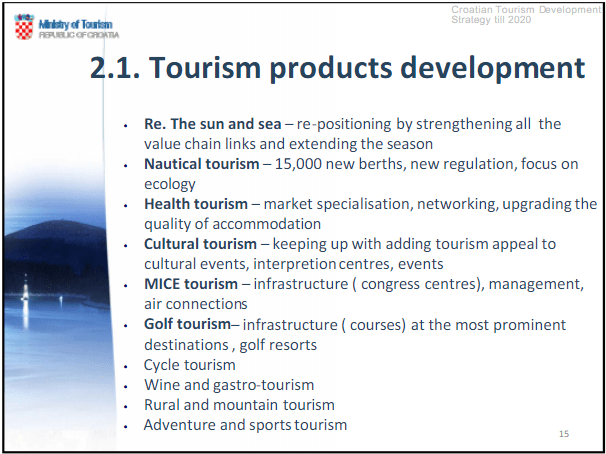
Let's start at a fixed point - the Croatian Ministry of Tourism's Tourism Development Strategy 2013-2020. As you can see above, golf is central to the country's strategy. I contacted the Ministry of Tourism last year to ask for details: Here was the reply:
"The 2020 tourism development strategy foresees the construction of 30 new high-quality golf courses, roughly at the following locations: 14 in the northern Adriatic, 8 in the southern Adriatic, and 8 in continental Croatia."
Impressive indeed, except for one thing. Almost 5 and a half years into the plan, I had not heard of any golf course being constructed.
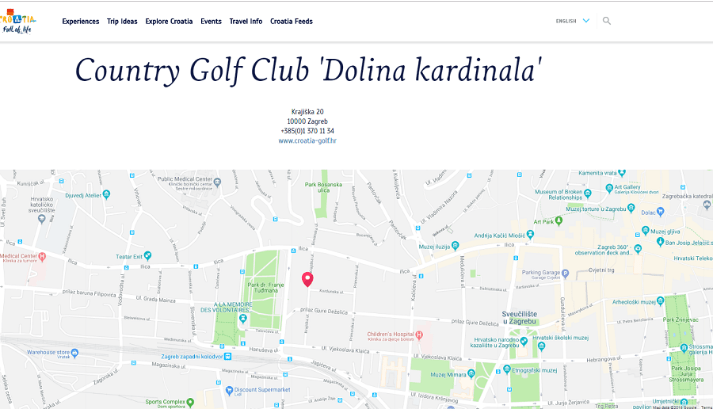
I asked how many courses Croatia had and how many were being built. Nobody seemed to know anything for sure. The ministry said there were three courses in Croatia, one of which was actually a driving range, the Croatian National Tourist Board trumpeted four courses, one of which was conveniently located in the centre of Zagreb (see above), whereas in actual fact...
... it had been abandoned for years (see drone video above).
Clearly, the strategy was not quite working, unless the Ministry was going to produce 30 golf courses and a white rabbit out of a hat.
This staggering non-performance did not deter our heroic ministry, however - far from it. In June last year, the ministry reported:
Joining the family of golf destinations is imperative for the Croatian tourism industry, because without it Croatia will remain a seasonal tourist destination, the first conference on golf tourism in Croatia said in the northern Adriatic town of Porec.
Assistant Tourism Minister Robert Pende said that Croatia would not be able to increase the accommodation occupancy rate significantly without making progress in the golf segment. He said that a lot had been done to adjust infrastructure as a prerequisite for any serious golf projects, especially on state-owned land.
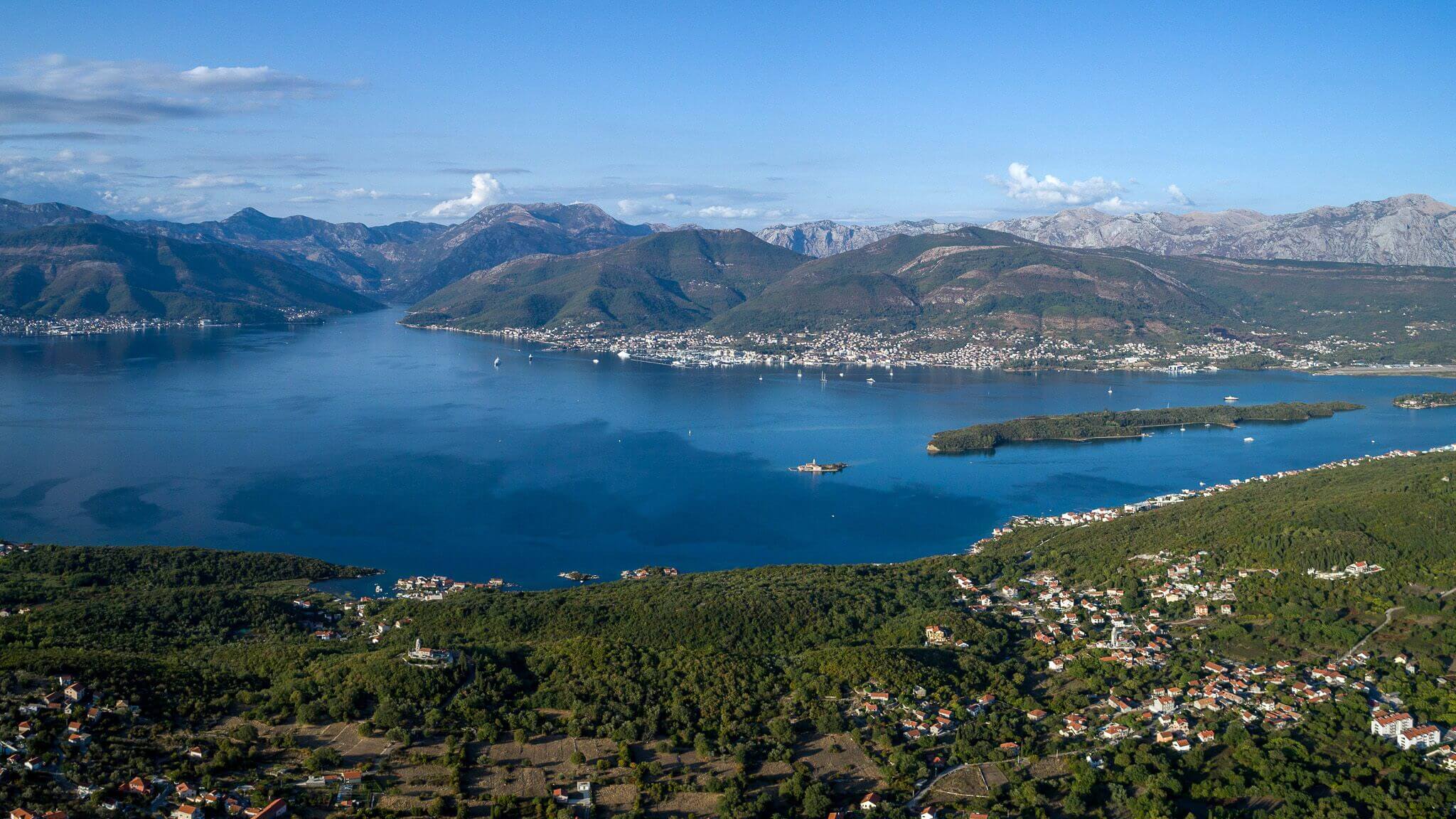
"With the existing investor interest, I think we have created preconditions for getting several golf projects in the next two to three years," Pende said, noting that Istria County was leading in that regard.
"Golf is additional content which all our competitors have. Croatia is very suitable for the development of golf tourism because of the proximity of outbound travel markets and the possibility of playing golf along the coast all year round. We must seize that opportunity," Pende said.
I contacted the Ministry of Tourism for clarification, but there was no reply.
Croatia's smaller Western neighbour, Slovenia, has 13 golf courses, despite golf not being a core focus, as far as I am aware. Interested in golf in Slovenia - here is the Total Slovenian News guide.
Croatia's love affair with pretending to be a golf destination then preventing anything from happening goes back much further than the 2013 strategy document. When I had my own real estate agency back in 2004, there were no less than 22 courses earmarked for Istria alone. And one of them had rather a famous backer.
Jack Nicklaus Begins Work on Golf Course in Croatia
ZAGREB Croatia, May 19, 2006. Jack Nicklaus' organisation doesn't invest in dud deals. Any wise investor would do well to note where he is building his golf courses.
The world's most famous golfer was met by Prime Minister Ivo Sanader (who only last week started a prison sentence), and a 200 million euro golf resort in Istria was announced. Want to know how it is going? Whatever Happened to Jack Niklaus Croatian Golf Course, Approved by PM Sanader? You can also check out the plans, looks very nice.
Jack's very same project was being offered on YouTube a decade later.
And the paperwork is almost finished...
Of course, the biggest golf story in Croatia at the moment is the failed Srd development above Dubrovnik from Israeli investor, Aaron Frenkel.
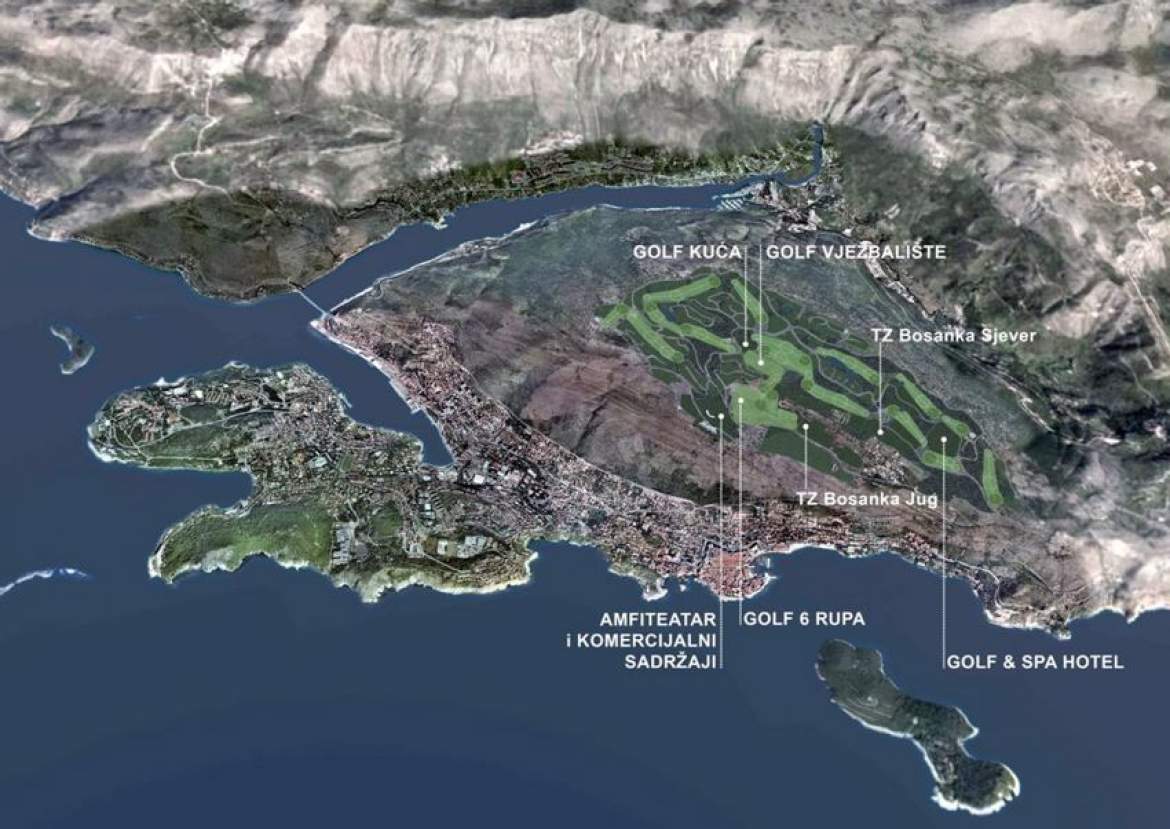
There is a LOT to this story, and I do not have the knowledge of the project to go into great detail about the reasons why the Srd golf project did not happen. That is was not popular locally was perhaps best exemplified by the results of a 2013 referendum on the project, where 10,051 votes against trumped the 1,846 for. From various people I have spoken to more familiar with the project, it appears to have failed through a cocktail of corruption, environmental campaigners, objections from those who defended Dubrovnik during its 1991 attack, and (I suspect) an element of local accommodation owners not fancying so much high-quality villa rental competition.

The investor has taken the case to arbitration in Washington, with a ruling due shortly. The Croatian taxpayer (that's you and me folks) looks set for a possible bill of up to 500 million euro.
So, we are now 6 years into the Ministry of Tourism's strategic plan to develop Croatia as a regional golf tourism tiger. The results so far: absolutely nothing close to the first phase of construction, and a potential bill of 500 million euro, as well as further loss of reputation among foreign investors.
Outstanding job!
Meanwhile, just over the borders...
I want to talk about Lustica Bay and Montenegro, but thought it also worthwhile mentioning a project just across the border in Republika Srpska, about 15 minutes from Dubrovnik Old Town. I have not heard anything about 'Dubrovnik Heights' in a while, but there were certainly plans to build a course just over the border. Using the brand of Dubrovnik, access to Dubrovnik Airport and the city as major draws. And while golf in Bosnia has been out of the news lately, here is an intriguing paragraph from the latest Gary Player newsletter, the famous golfer behind the signature 18-hole-course in Montenegro:
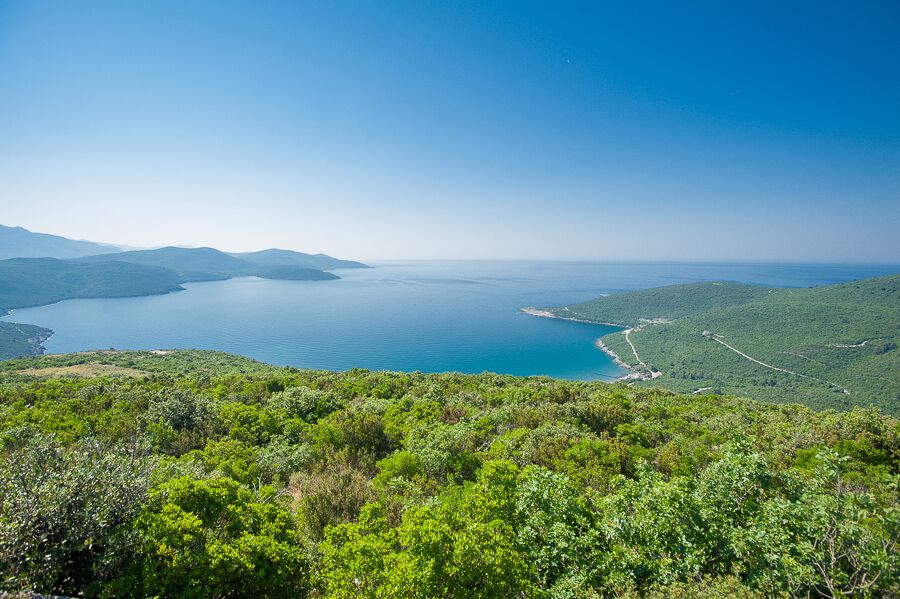
We would be delighted to start another project in Montenegro or the surrounding countries, but Lustica Bay is the one we are focusing on at the moment. Our design team is working on some feasibility studies for projects in Albania, Bosnia, Serbia and Romania so it’s a very active part of the world for us right now.
Albania, Bosnia, Serbia and Romania. But not the country with the defined tourism strategy to build 30 courses - Croatia.
And so to Montenegro.
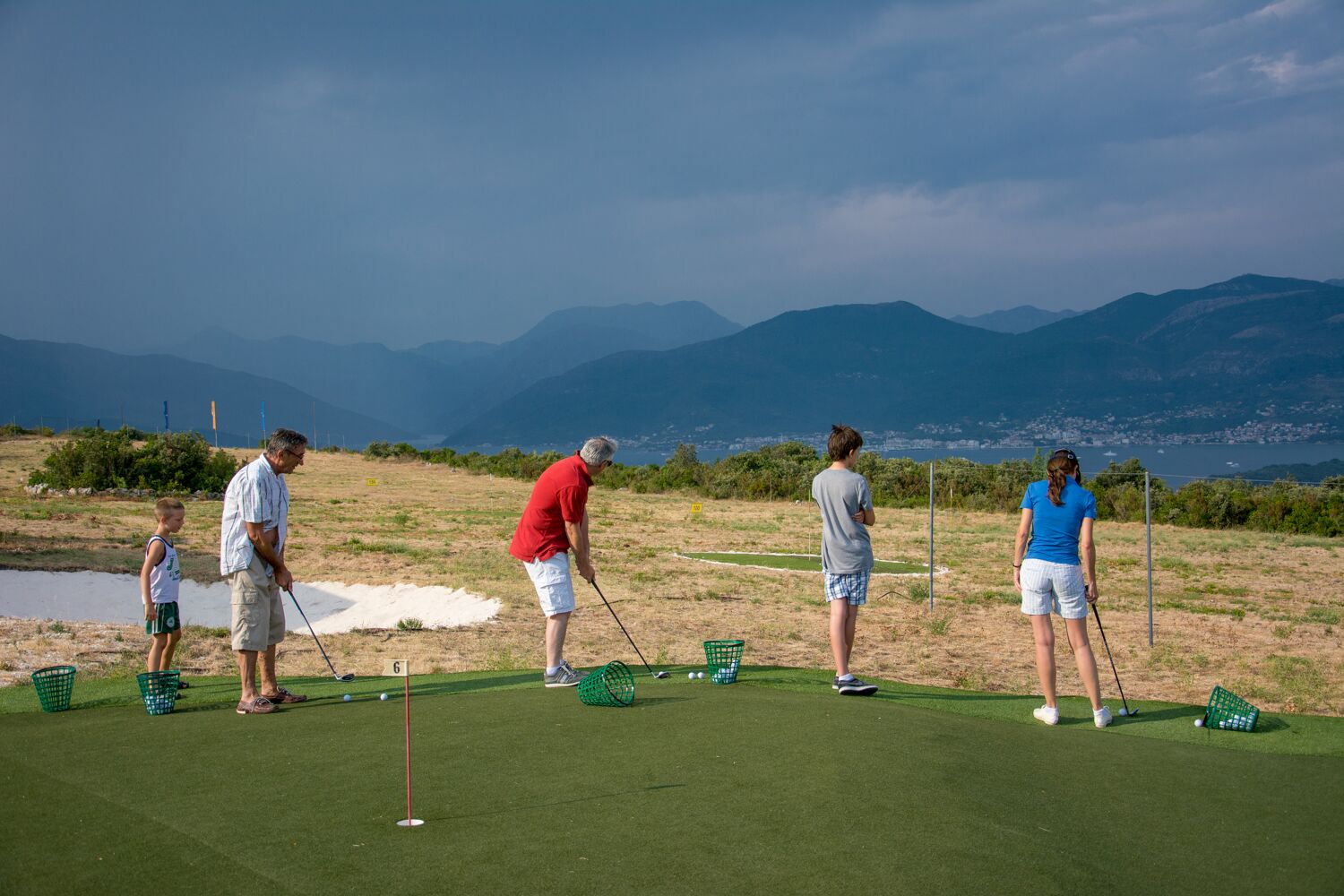
I upset a few people a few days ago with an article called How Dubrovnik is Becoming an Extension of Luxury Tourism in Montenegro. Apologies for those who were offended, but I am only stating what is the truth. As part of the 2.5 billion euro investments of Lustica Bay, Portonovi and Porto Montenegro (to name but three), Lustica Bay will have that Gary Player 18-hole course as an additional luxury tourism offer. With the airports of both Tivat and Dubrovnik offering increasingly year-round services, the options for high-spending luxury tourism are tantalising indeed. And with a visit to Dubrovnik a wonderful extension of that, the future looks very bright indeed. In a recent interview (which you can read here), Player had the following update:
The Marina and Chedi hotel is completed and opened last year, the marina village residences are also open. For the golf, 9 holes will open in 2021 and 18 ready for play in by 2022.
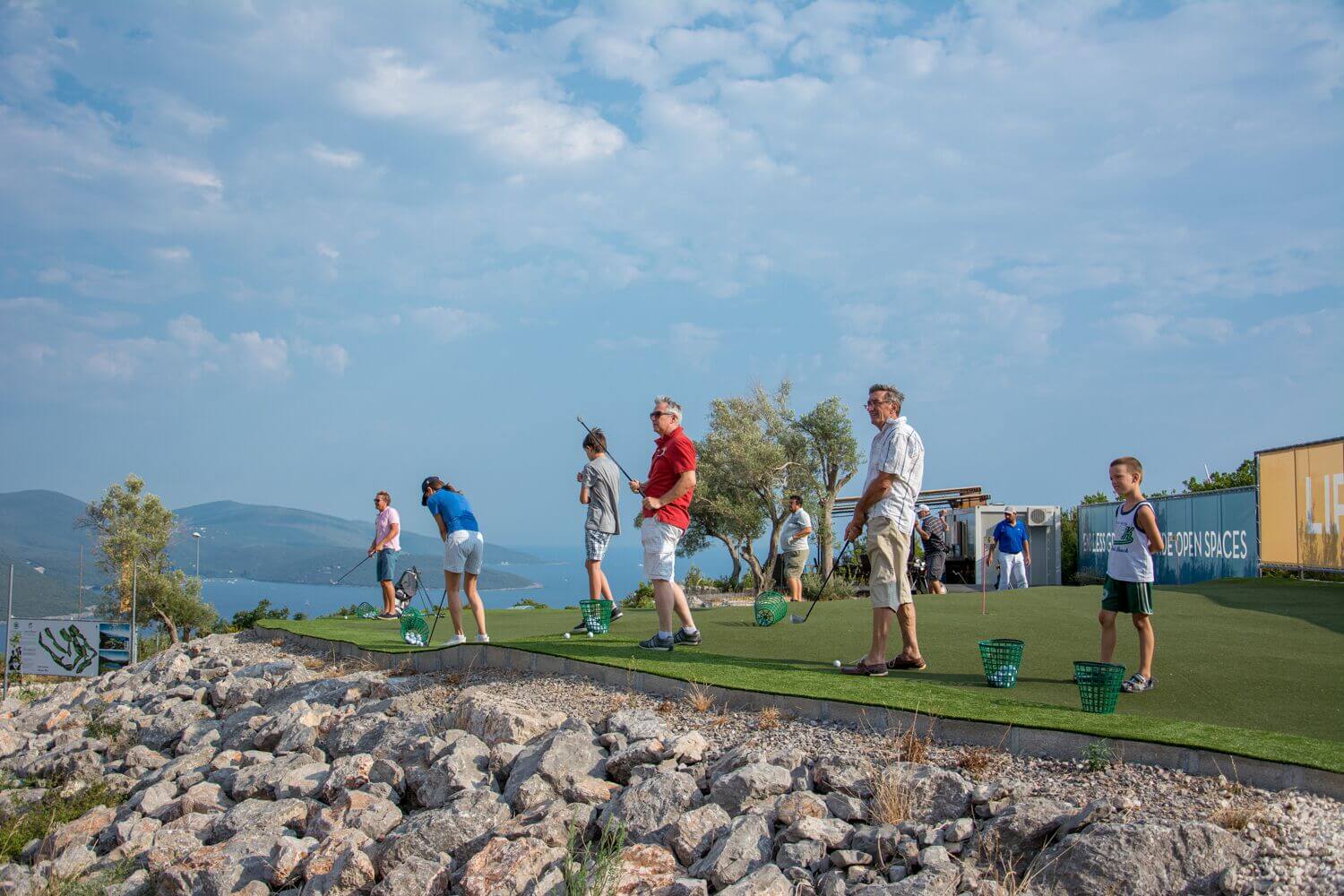
There are certainly many challenges ahead to ensure that the golf course does open on schedule (and discussions on water supply are ongoing, as I understand, for example) but almost all of the excavation and preparatory work has been done. But Player is clearly excited - here he is talking about whether or not the Lustica Bay development is a typical project for him:
Not at all. The course has dramatic elevation changes throughout the layout. The topography is quite steep so the shaping and contouring will be very bold and dynamic with stepped fairways, small cavernous bunkers, and small putting surfaces that will nestle into the steep topography.
We are going to manufacture our own capping sand from the excavated rock by crushing it to the appropriate specification and all the irrigation water will be treated effluent from the nearby town.
The driving range will be open this summer, and the first nine holes next. You can learn more about the Lustica Bay golf facility and keep pace with progress.
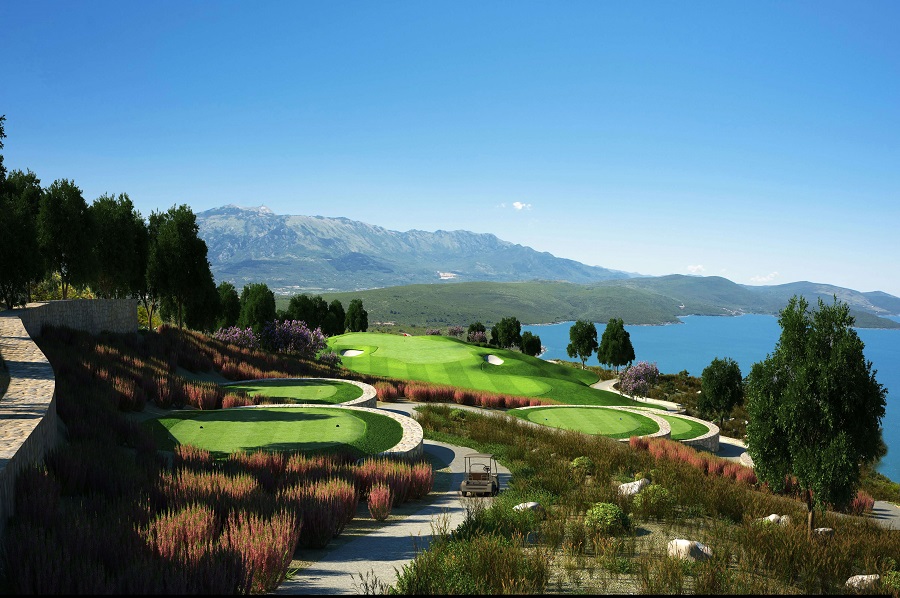
Meanwhile in Croatia...
There are just three golf courses in Croatia, one of which opened in 2009, another in 2004, and the one on Brijuni which dates back to Tito's times. Perhaps so few golf courses is a good thing - as I said, this article is not about golf.
But if the strategy is not to develop Croatia as a golf destination (a very successful strategy so far) then stop putting golf at the heart of tourism strategy. And if the plan is to develop golf as a tourism strategy, what on earth has the ministry and its team been doing for the last six years, and longer?
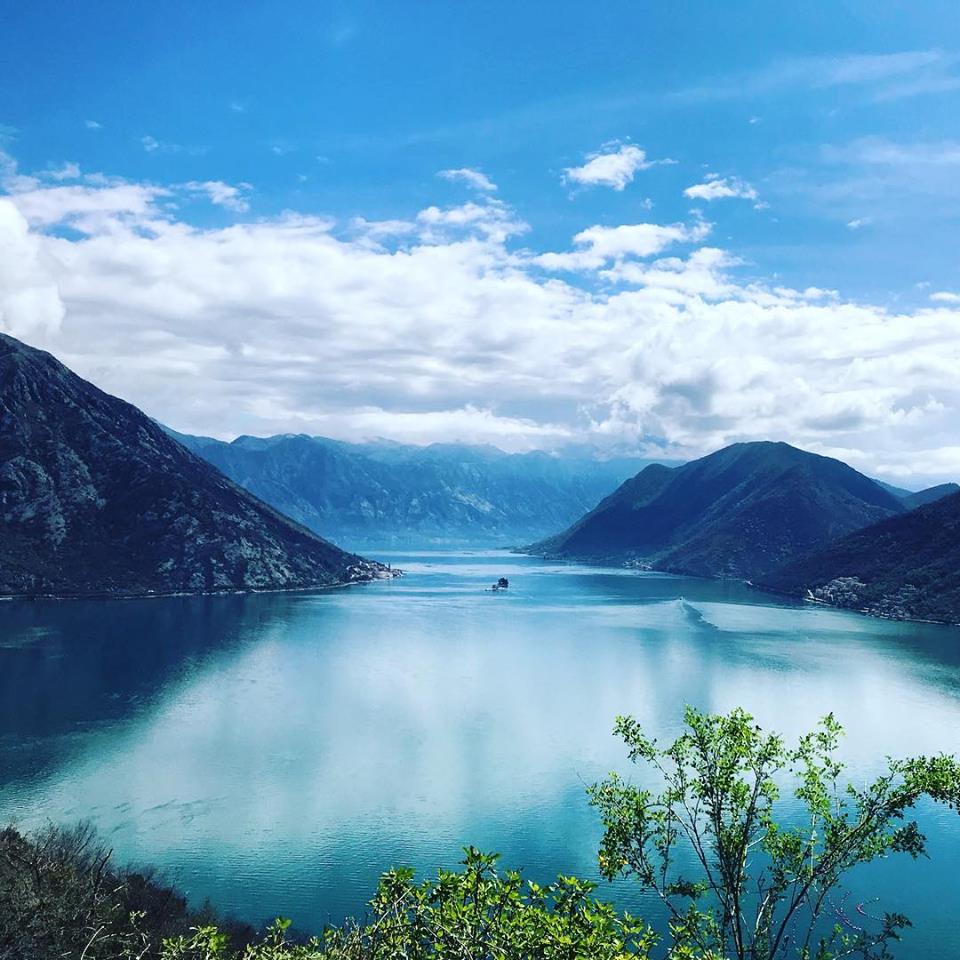
(Bay of Kotor, Montenegro - Photo credit Marko Stefanek)
Montenegro is not perfect, far from it, but the closer one looks, the more impressive it becomes. And while detractors will talk of the alleged corruption in Montenegro compared to Croatia, let's not forget why Porto Montenegro (and other projects) are not in Croatia. And when compared to Croatia's innovative strategy of 6 years with golf at the heart of what they are trying to achieve, with a result so far only of a 500-million-euro lawsuit, I don't think Montenegro is doing too badly by comparison.
Do you?
Dubrovnik-Neretva County Promo Film Wins Award in New York
Dubrovnik is no stranger to winning awards and you're probably used to reading about it, but this area in the extreme south of Dalmatia continues to fascinate the world for an abundance of reasons. From its stunning natural beauty and crystal clear sea, to its rich history and equally impressive culture, the Pearl of the Adriatic and its immediate surrounding area just keep on making the world's jaws drop.
This time however, it isn't just the famous Dalmatian UNESCO protected old city and its mighty walls which are taking home yet another award for a promotional film made about its unique beauty, but the wider area of Dubrovnik-Neretva County. This truly picturesque part of southern Croatia boasts an almost equal amount of natural beauty and history, and from Ston to Konavle next to the Montenegrin border, you'll likely have your breath taken away multiple times.
As Morski writes on the 11th of April, 2019, the brand new promotional film from the Dubrovnik-Neretva County Tourist Board, ''Dubrovnik Riviera'' continues to win awards and receive recognition from all sides. To be more precise, at the 2019 New York Festivals® International Film and TV awards festival, which was held in Las Vegas, Nevada, the promo film showcasing Dubrovnik-Neretva County's sheer beauty came third place and won the bronze plaquette.
To briefly recall, at the recent ''The Golden City Gate'' ceremony in Berlin, Germany, at the biggest international ITB World Tourism Fair, the promotional film came second place in the category of regional films, the film has been made by Balduci Film from Zagreb, was directed by Herve Tirmarche and produced by Spomenka Saraga. The film depicts the beauty of Dubrovnik-Neretva County from the Neretva valley, to the islands of Korčula and Mljet, and then Croatia's southernmost municipality of Konavle, which borders Montenegro.
Make sure to follow our dedicated lifestyle and travel pages for much more. If it's just Dubrovnik and southern Dalmatia you're interested in, have a look at Dubrovnik in a Page for everything you need to know about the Rearl of the Adriatic.
From Dalmatia to Karlovac and Rijeka, Chinese Eye Up Croatia
As Gordana Grgas/Novac writes on the 8th of April, 2019, if there was a European tender held solely to attract Chinese investment, the champion would certainly be Great Britain, followed by Germany, and then immediately by Italy and France. Croatia might not be anywhere near the top of China's European ''wish list'', but despite that, the Chinese interest just keeps on coming...
The countries which make up Central and Eastern Europe are low on the aforementioned European scale, even though with China, at least since the year 2012, they have enjoyed a special relationship through the China + 16 initiative, which, as a parallel diplomatic format, tends to irritate the larger, more powerful members of the European Union, as well as the European Commission itself. One of lowest on the list is Hungary with its Eurosceptic government led by Viktor Orban, and Croatia is at the very bottom, but the desire is to alter that.
This week, there is an official visit by Chinese Premier Li Keqianga to Croatia, and the eighth summit of sixteen countries of Central and Eastern Europe with China down in Dalmatia's southernmost city of Dubrovnik, and it might be the easiest thing to look at it all as part of a political show that could act as bait for investment. Whether or not this investment will really happen and what shape that might take, whether it will be done mainly through private projects, for example in tourism, or through major state projects in the rail and port sector, is not yet clear at all.
Croatia will sign nine general memoranda with China in the areas of trade, investment, agriculture, transport, science, technology and innovation, education, sport and tourism, and the most convenient customs administration protocol that will enable the export of Croatian dairy products, which are greatly loved in China. Croatia also intends to join the Asian development investment and infrastructure bank headquartered in Beijing, how much that will cost Croatia however, is not yet known.
How large European countries cooperate with China was demonstrated just ten days ago by the Italians and the French. For the visit of Chinese President Xi Jinping, Rome signed 20 agreements (and joined One Band, a one way system that connects China with the rest of Asia, Europe and Africa, and expands its trade and influence). In Paris, 15 such agreements were signed, where either contracted or announced transactions amounting to billions of euros were dealt with, covering a wide range of areas - from exports of Sicilian red oranges and French frozen chicken to the opening of Italian ports for Chinese investors, sales of 300 Airbus aircraft, energy projects, shipbuilding, etc.
After the construction of Croatia's much anticipated Pelješac bridge, which is funded primarily by European Union money, Croatia hopes for more Chinese investments in national transport projects. This regards the port of Rijeka and the entire Rijeka traffic route, including the line from Rijeka to Karlovac, as well as projects such as airports.
According to data which takes the whole of Europe into account, during the period from 2000 to 2018, almost 47 billion euros of direct investment from China was invested in Britain, Germany saw 22 billion euros, Italy saw 15.3 billion euros, and France saw 14.3 billion euros. Hungary saw a significantly smaller figure of 2.4 billion euros from the Chinese, Poland saw even less with 1.4 billion euros, Romania saw 900 million euros, and Croatia saw just 300 million euros. A stark contrast to the United Kingdom, which is by far one of Europe's most powerful nations.
In the region, the intensity is getting stronger, and in neighbouring Serbia, Chinese loans have come in handy when building transport infrastructure and energy projects and, but that medal, like any other, has two sides, and the takeover of companies hasn't always been met with welcome arms by the Serbs.
The aforementioned data report shows that the culmination of Chinese investment in the EU was reached back in 2016, largely through the take over of companies, and over the last two years, it has fallen, which is attributed to more stringent rules implemented by some EU member states, as well as increased capital controls conducted by Beijing.
For Zagreb, it was a bit uncomfortable to get closer to Communist China in the above mentioned period, as the common policy of overseeing and limiting the Chinese penetration of the ''Old Continent'', especially in strategic and technologically sensitive areas, was being undermined. That chapter however, appears to be well and truly over in Croatia's eyes.
While large investments and projects are anxiously anticipated here in Croatia (and the Chinese interest in Rijeka and the Rijeka-Karlovac line is at least nine years old), data on trade relations show that there is a deficit. State Secretary Nataša Mikuš Žigman notes that there has been a noticeable increase in the volume of trade between Croatia and China, but imports are growing more than exports are. Last year, exports of goods amounted to 133.4 million euros, an increase of 19 percent when compared to 2017, while imports amounted to 803 million euros, an increase of 15.6 percent.
Croatian companies might be able to export more to China in the future, and the business forum being held in Dubrovnik is an excellent chance to showcase some innovative Croatian export ideas, but for now, the main export products continue to be raw or semi-finished products such as stone, leather, untreated wood and polymers, while when it comes to imports, we can see the reign of traditional Chinese consumer goods, white electronics and telecommunications equipment, as well as a constantly increasing number of Chinese tourists visiting Croatia, too.
As the Chinese continue to ramp up their business in Croatia, from Pelješac bridge to Rijeka's port, more announcements continue to appear, and just recently we reported on the Chinese plan to open up a car factory tucked away among the citrus trees of southern Dalmatia's fertile Neretva valley, more precisely in the Nova sela business zone near Kula Norinska in Dubrovnik-Neretva County. While many remain concerned about Chinese influence in Croatia, many others are much more occupied and lured by the promise of an economic boost and employment opportunities.
Make sure to follow our dedicated business page for more information on China-Croatia relations and much more.
Click here for the original article by Gordana Grgas for Novac/Jutarnji
How Dubrovnik is Becoming an Extension of Luxury Tourism in Montenegro
April 7, 2019 - As more luxury developments are announced and being built in Montenegro, the relationship with neighbouring Dubrovnik is changing.
2019 has been a very stimulating year for me so far, with lots of fantastic new contacts made and some really fascinating conferences attended in the region. And the more I meet people, the more I listen to conference experts, and the more I move around, the clearer some of the patterns and trends become.

One of the most interesting conferences attended so far was Digital Takeover in Zagreb, whose international speakers provided attendees with a wealth of information and new concepts in the fast-changing digital world.
One of the most arresting slides was the one above, a snapshot of some of the biggest global brands and influences in our daily lives that simply did not exist back in 2000. How different life was then just 19 years ago! The slide has stayed with me ever since, as I look around the region at how things have changed, and at things that simply did not exist in 2000.
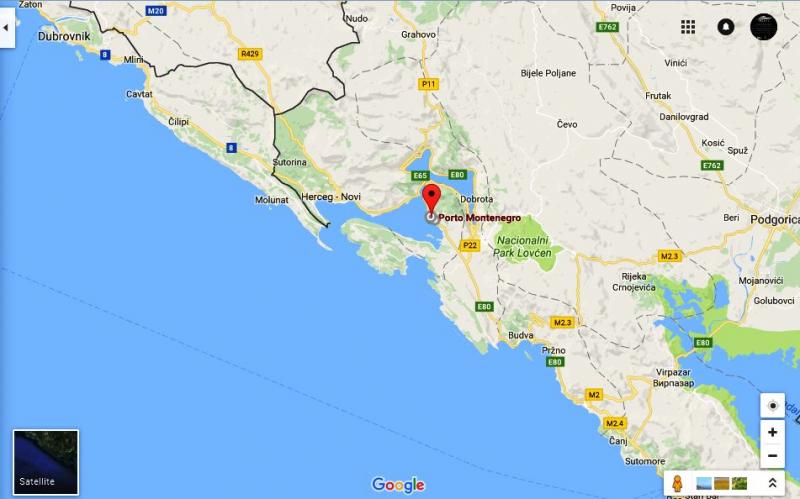
Things like luxury tourism in Montenegro. With the very notable exception of Sveti Stefan and gorgeous Kotor and its UNESCO bay, Montenegro has always been regarded as the poorer cousin of the magnificent Croatian coast, 1000-plus islands, and spectacular walled town such as the Pearl of the Adriatic itself. A town like Tivat, for example, was a mere village with few attractions for tourists back then, and while it was common for tourists in Tivat to visit Dubrovnik, the very notion of Dubrovnik tourists making the journey in the opposite direction was laughable.
No longer.
The arrival of Porto Montenegro just over a decade ago started a process which is slowly redefining the map of quality tourism in the region. As Dubrovnik grapples with mass tourism and packing in the cruise ships which generate great tourist arrival numbers but an ever-decreasing quality of tourism experience, over the border in Montenegro (just 21 km from Dubrovnik Airport), an altogether different story is emerging. And if you take a closer look, as TCN did this week, the story is mightily impressive.
Porto Montenegro was the first luxury destination for superyachts in the region. Built at a cost of 200 million euro as the brainchild of Canadian entrepreneur, the late Peter Monk, Porto Montenegro quickly became the go-to destination for the rich and famous in the yachting world. Conversations were starting in the international media that Montenegro was the next big thing in luxury travel.
Many people laughed. Montenegro? With its terrible roads, reputation as a Russian playground, and overbuilding? It is certainly true that the infrastructure needs a LOT of work, that there has been chronic overbuilding in places, much less so that it is a Russian playground these days. What is true is that a strategy of developing Montenegro as a luxury one is working. And far from being Russian investments, they are coming from all over the world - Canada, Qatar, Egypt and Azerbaijan, to name but four.
But how can Montenegro develop its luxury tourism with such poor infrastructure and with the overbuilding on its coast? It was something I decided to look into this week during my visit to the country, and I spent time with the stakeholders of Porto Montenegro, Lustica Bay, The Chedi, the management team of Mamula, and senior management from Portonovi. And a combination of those projects was eye-opening indeed.
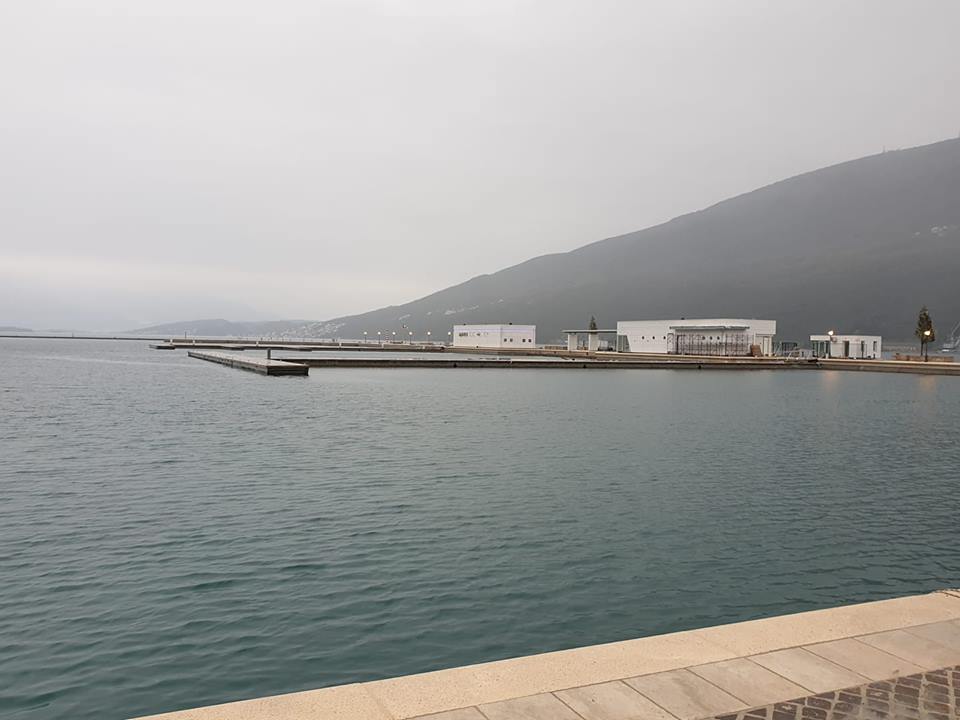
It was during my visit to Portonovi (of which more below) that it finally hit me how the Dubrovnik connection was not only going to provide Montenegro with an abundance of luxury guests in search of things they sadly cannot find in Croatia, but also that Croatia's jewel will serve as a wonderful addition to Montenegro's luxury offer.
Walking around the impressive 900 million euro development, which is set to open its first Phase in July, I asked how guests would come from Croatia. The road from the border is not the most pleasant arrival experience, and there are often delays at the border (read the Total Croatia guide to crossing the border from Croatia to Montenegro).
"We will have several options apart from land transfers," came the reply. "People wanting to visit us from the old town of Dubrovnik will be able to do so by speedboat. We have a full customs house and passport control at the resort (see photo above, taken on a cloudy day this week). With our helipad over there, a helicopter transfer direct from the airport will take just minutes. And there will also be an option for a transfer to the border village of Molunat from the airport, and onward speedboat from there."
No need to worry about the transfer issues or poor infrastructure on the roads for high-spending guests. Now Dubrovnik and its airport with its millions of tourists and arrivals is the perfect catchment area for Montenegro.
The irony, of course, is that all this luxury tourism could - and should - be happening in Croatia, including Porto Montenegro itself. That project was supposed to happen in Croatia, but a certain politician allegedly required too much money to make it happen in Croatia.
And so Croatia's loss sadly looks set to be very much Montenegro's gain. For there is plenty more happening just a short boat ride away from the Pearl of the Adriatic and its accessible airport.
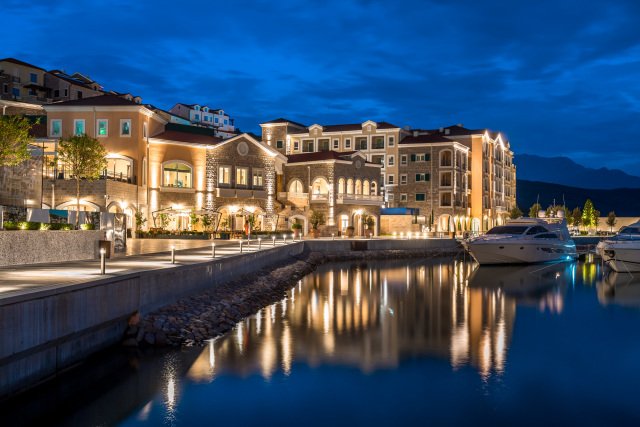
The biggest investment in Montenegro is Lustica Bay, a 1.1 billion euro project from Egyptian company, Orascom. A greenfield site of no less than 7 million m2 is being transformed into one of the luxury destinations in Europe. 7 luxury hotels, 2 marinas, one village of 2,500 inhabitants, and a Gary Player 18-hole golf course are but some of the highlights.
Also accessible by boat from Dubrovnik, and also with its own customs house, Lustica Bay is one more massive piece in Montenegro's crown. It was recently voted the Best European Property Development at the Luxury Network International Awards in Dubai. The opening of its flagship 5-star hotel, The Chedi Lustica Bay, last July has taken Montenegro's luxury tourism story one step further. Check out the opening party in the video above.
A key component of the strategy of all these major investments in Montenegro is the concept of building a community and injecting life into the developments, rather than just selling an apartment which is used two weeks a year. I am not aware of any such projects which have successfully managed to do this in Croatia, but Porto Montenegro, for example, has become an accepted extension of life in Tivat.
Lustica Bay will take that concept to the next level. Construction in Centrale has begun, a village of 2,500 inhabitants which will have many of the facilities one would expect to find for everyday life, including a school. And far from this being a Russian playground, Lustica Bay has so far sold to over 30 nationalities, with growing purchases from local Montenegrin buyers.
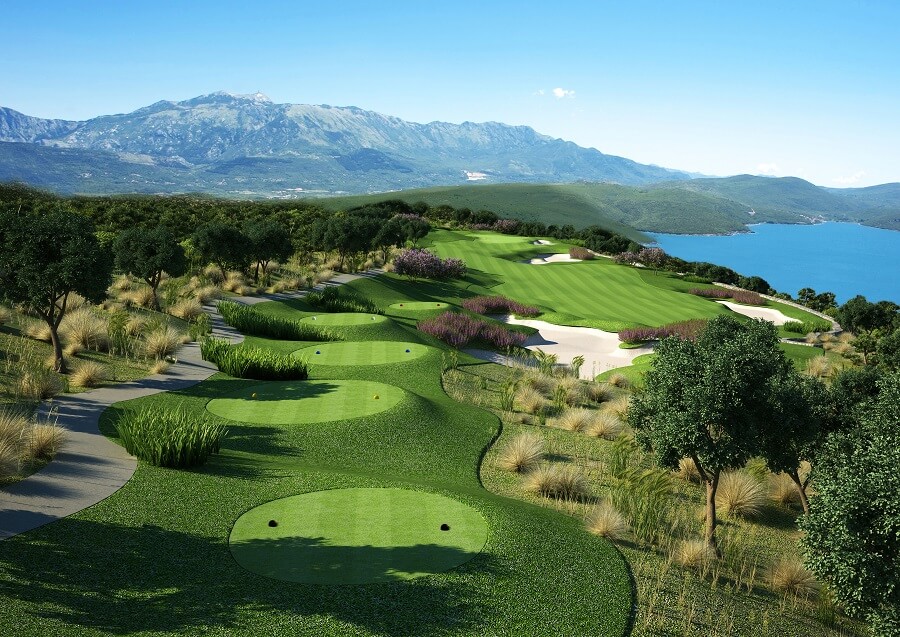
We will be doing a big feature on golf in Croatia and Montenegro shortly, but as the Croatian government faces an imminent $500 million arbitration loss over the failed Srdj golf project above Dubrovnik, construction of the 18-hole Gary Player championship course on Lustica continues apace. One more luxury addition that Dubrovnik's guests and airport passengers will be able to enjoy in the 'poorer cousin' over the border.
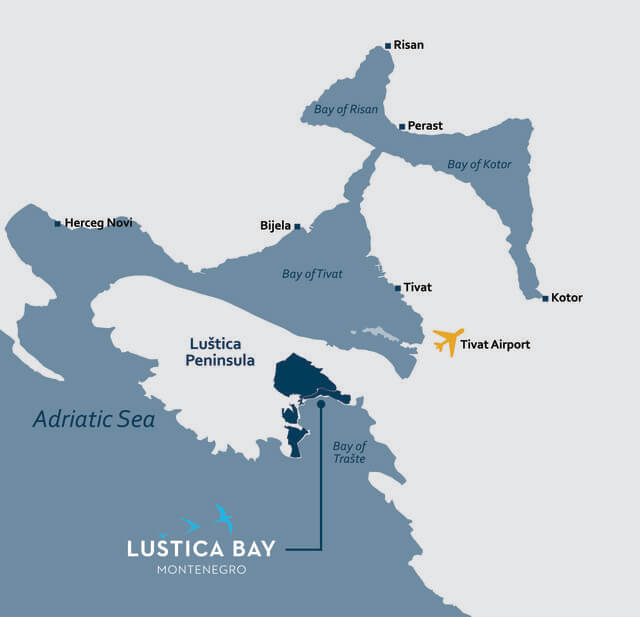
Accessibility to Lustica Bay and the other resorts is also possible from nearby Tivat, which is just a 10-minute drive away. With more than 1.2 million passengers in 2018, airlines such as Lufthansa have begun servicing Tivat, and airlines are waking up the possibilities of this year-round luxury destination.
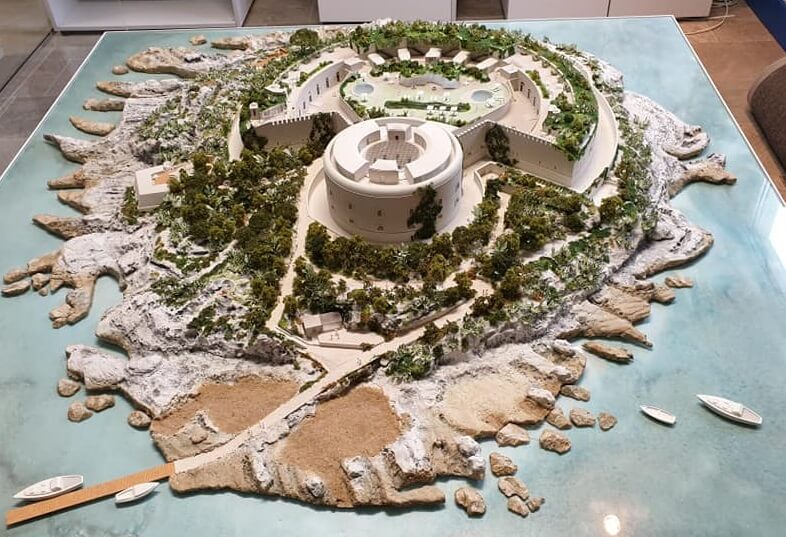
And while the exclusive Aman resort of Sveti Stefan the other side of Budva may be the current poster child for heritage top-end tourism on the Montenegrin coast, there is a new kid on the block, as Mamula Fortress looks set to open as a 5-star resort in 2021.
An even shorter distance from Dubrovnik and its airport.
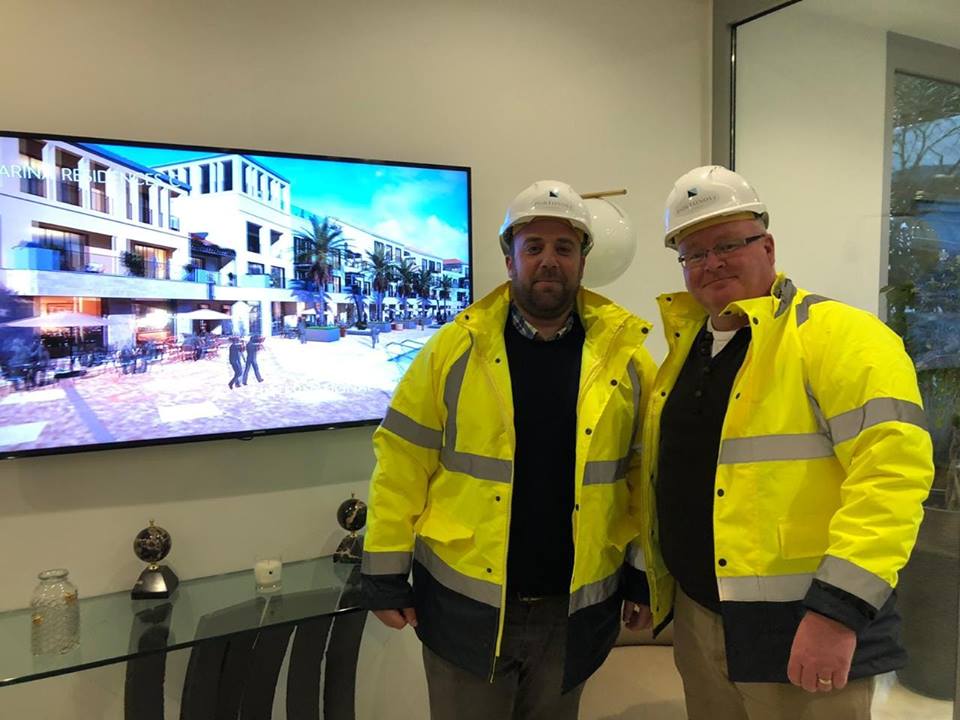
Although I know Porto Montenegro and Lustica Bay quite well, I had never been to Portonovi, and was very grateful to Chief Sales Officer Sherri Motazed for giving us an extended tour of the project, which will open this summer with its first phase, with the addition of the first One&Only resort in Europe in 2020.
You can get an idea of how it will look when finished from the animated video above.
And Dubrovnik and its airport really are quite handy...
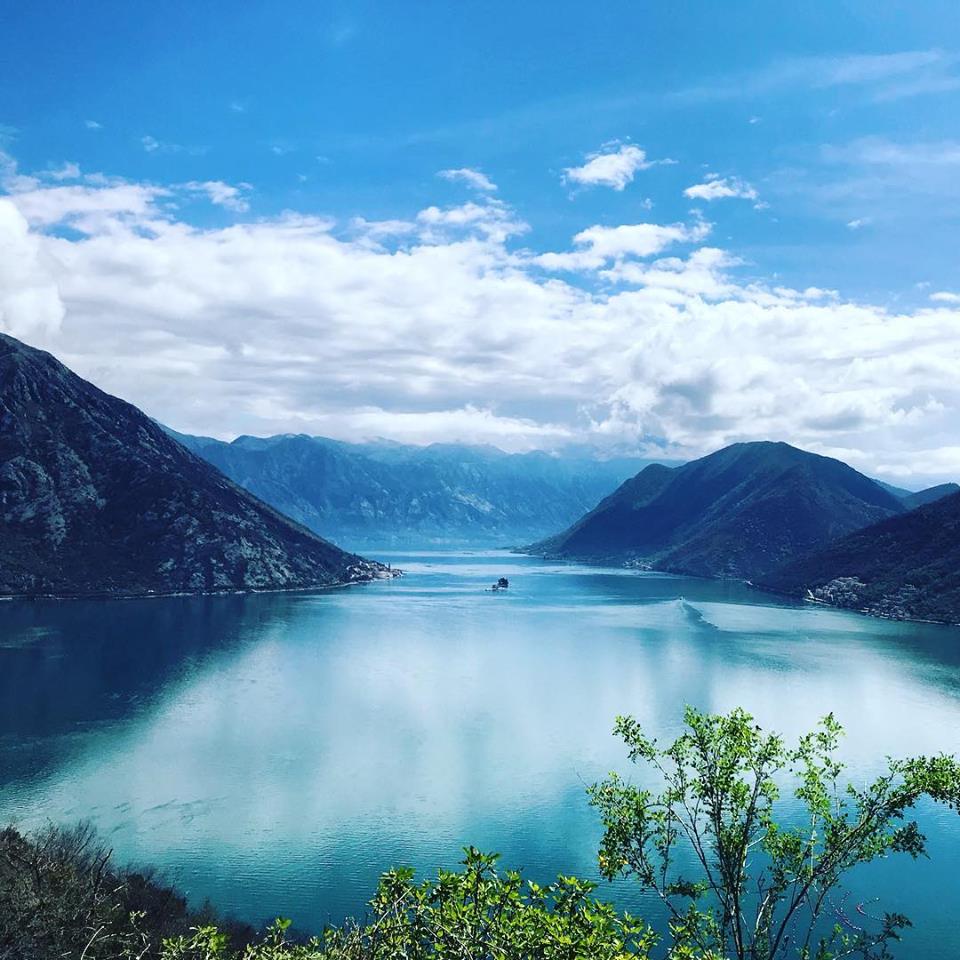
(Photo credit Marko Stefanek)
The slogan of the Montenegro Tourist Board is 'Wild Beauty' - the UNESCO World Heritage site of the Bay of Kotor is just one outstanding attraction for those looking to explore.
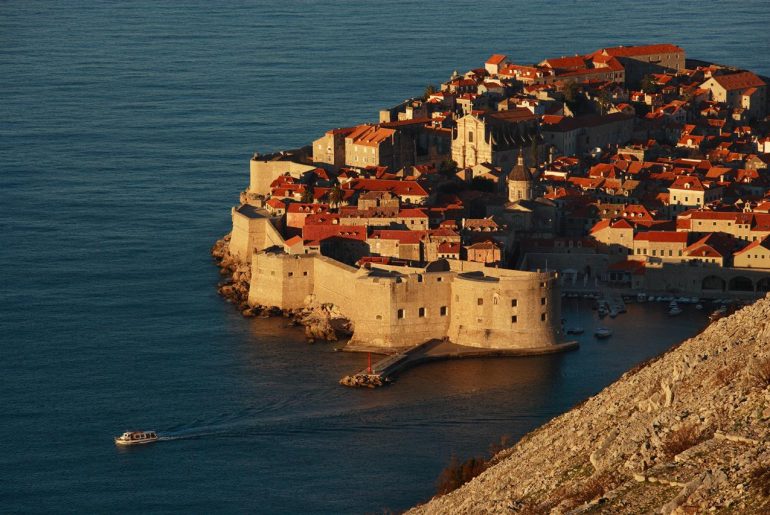
(Photo by Romulic & Stojcic)
As is another UNESCO World Heritage Site, Dubrovnik, just across the border.
Dubrovnik will always be the number one attraction in the region (learn more in our Total Croatia 'Dubrovnik in a Page' guide), it is simply too fabulous to be anything but number one. But as the famous city grapples with over-tourism and lack of luxury quality offer, the neighbours are watching and set to take advantage.
Aman, The Chedi, One&Only are some of the names which are already in luxury tourism in Montenegro, but not in Croatia. Word on the street in Montenegro from industry insiders this week will soon see Four Seasons, Ritz Carlton and Raffles added to that list, as well as others.
The Kings of Accidental Tourism in Croatia are busy trumpeting increasing tourism numbers from lower-spending guests. The cramming of tourists into its destinations is reducing the quality of the experience, while the battle for the luxury tourism market is all but lost. Business Insider recognised the strides Montenegro is making, listing it (along with places like Rwanda - learn about their incredible progress 25 years after a genocide before you judge) in the top 15 destinations for billionaires to visit in 2019.
Will any of the decision-makers in Croatia notice, or even care, let alone do something about it? For more information on just how far behind Croatia is in the luxury foreign investment scene in comparison to its 'poorer cousin', read more in Lessons from Montenegro: Penthouse Haludovo in 1971, Croatia's Biggest Foreign Adriatic Investment.
Me, I am off to buy a speedboat to start my transfer business from Dubrovnik to Montenegro.

